Resources & Inspiration
What are organizations around the world doing to reduce waste and take action on climate, and what more can you do?
Check out our resources and other tools, case examples, glossary of terms as well as some inspiring images of circularity in action in exhibitions and staged events.
On This Page
- Other Toolkits, Worksheets & Calculators
- Templates, Contract Language & Patterns
- Case Examples
- Articles, Videos & Websites
- Images
Other Toolkits, Worksheets & Calculators
Creative Green Tools Canada
A free carbon calculator and reporting tools for measuring and reducing greenhouse gas emissions in arts sector venues, offices, tours, productions and festivals. Self-guided training videos to use the measurement tool and a series of questions to provide ideas for reducing your organization or event footprint.
Created in 2009 by Julie’s Bicycle, the CG Tools were designed to be simple, accessible, and to inspire change within the arts and culture sector. Continuously updated based on sector feedback, they play a central role in Arts Council England’s environmental sustainability efforts and are now utilized by over 5,000 organizations across 50 countries.

Gallery Climate Coalition (GCC) Carbon Calculator Tool
A free online tool for galleries and museums to calculate the greenhouse gas emissions associated with building energy usage, materials, shipping, air travel, surface travel, accommodation and digital footprint.
Galleries Commit: Climate Action 8×8
Guidelines for 8 types of actions for galleries to take to reduce GhG emissions; a basic carbon calculator tool and data collection template; a database of climate actions and an annual climate reports from museums and galleries.
Created by Galleries Commit, a worker-led collective committed to climate-conscious galleries in cities around the world.

Circular Design Guide (Worksheets & Resources)
Ellen MacArthur Foundation provides worksheets, articles, case examples and short instructional videos and webinars on circularity and circular design. It tends to focus on circular product development but principles are applicable to staged environments.

Artists Commit Climate Impact Reports (CIR Templates)
Artists Commit provides free templates –spreadsheets for measuring and reporting key areas of waste and greenhouse gas emissions (waste, shipping, travel, packaging and energy consumption) associated with theatre productions and exhibitions. See also: Artist Commit Reports IR climate reports posted by museums and galleries.
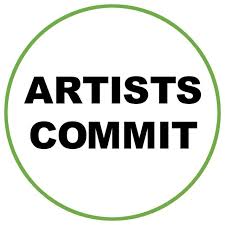
Artists Commit Materials Afterlife Checklist
Artists Commit provides a free template checklist for tracking and reporting what you do with materials at the end of staged events. The Materials Afterlife Checklist helps track whether materials are reused, repurposed, recycled or sent to landfill. This is one section of the CIR templates.

Artists Commit Reports
Museums, galleries and theatres and performance artists around the world that use the CIR templates, share their Climate Impact Reports (CIR) for individual exhibitions and ongoing operations. Check out the reports and upload your Climate Impact Report.

SAGE Common New Materials Environmental Evaluation
Summary of Research project for SAGE on greenhouse gas emissions and other environmental impacts of 3 categories of (new) materials commonly used in staged environments: Panelling, Framing materials and Latex Paints. Provides scores and ranks environmentally preferable options, coding: Green –highest environmental score (choose these brands/types); Yellow –ok but not great; Red –avoid these brands/types.
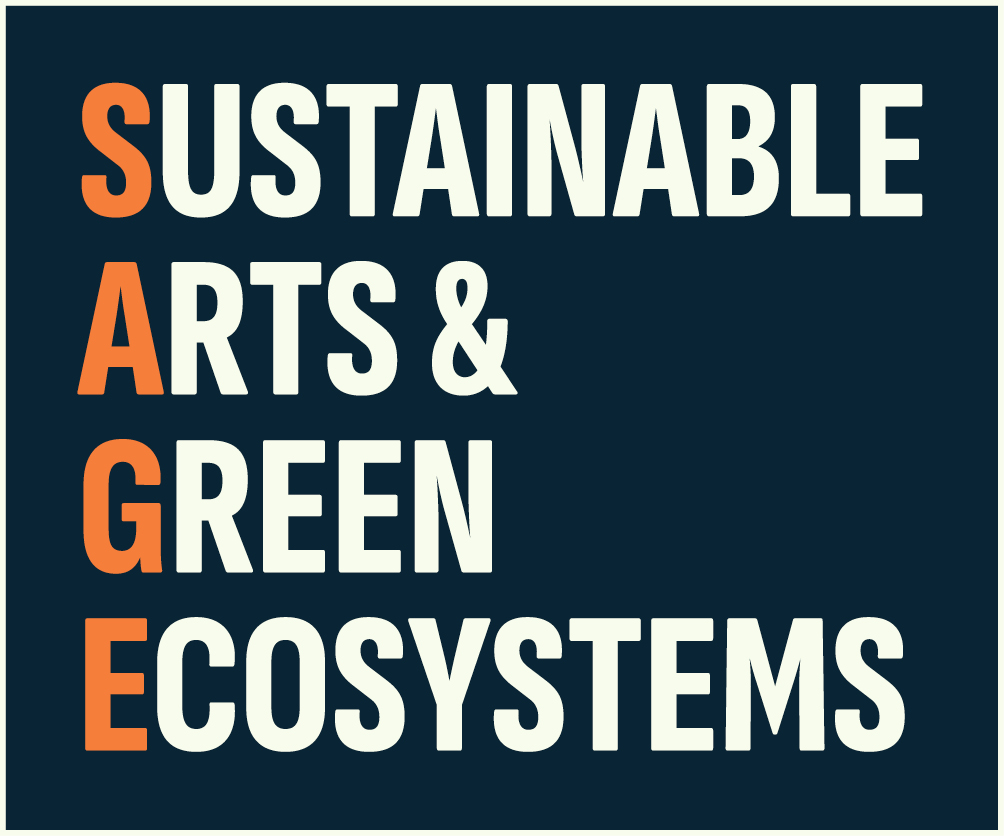
SAGE New Materials Environmental Evaluation Charts
Research project for SAGE on the greenhouse gas emissions and other environmental impacts of 3 categories of (new) materials commonly used in staged environments: Panelling, Framing materials and Latex Paints. This report provides explanations and detailed evaluation charts and scores for specific types of materials and products commonly used for theatre sets and exhibitions in British Columbia.

Carbon Simple (Coming Soon)
A free online tool designed to help project managers, designers, fabricators and producers assess the greenhouse gas emissions (GhG) associated with staged environments. Integrates with cost estimation workflows, enabling calculation of the global warming potential (GWP) of material goods, labour, and transportation before making purchasing decisions or providing quotes to clients.

Sustainable Exhibition Design & Construction Toolkit
Produced by Mindful Materials, this toolkit focuses on environmental and health impacts of materials with guidelines for what to use in exhibitions. Version 6, released in September 2024, features updates on mineral paints along with other new additions.
Using the Resources at Hand: Sustainable Exhibition Design
A project of the Center for Sustainable Curating in the Department of Visual Arts at Western University (Canada), this toolkit offers tips for low-carbon design, covering topics such as meeting impacts, packing, and materials choices for didactics. Version 4 includes updated information on sustainable materials, approaches to exhibition design, and examples from galleries and student projects.
Exploring Sustainability Across the Arts (Signage Toolkit)
FOFA Gallery at Concordia University published this toolkit on commonly used didactics, lettering and signage for museums and galleries. With tips and detailed “how-to” guidance for non-toxic and biodegradable alternatives to PVC and other plastics commonly used.
Exhibitions Design For Our time (Guide)
The Design Museum (London, UK) published a PDF guide to reducing environmental impacts of exhibitions. It addresses waste and materials reuse and other sources of greenhouse gas emissions. Includes an ‘Object Decision Tree’ to guide inclusion of environmental impacts into purchasing decisions.

Templates, Contract Language & Patterns
SAGE Template Contract Language
SAGE offers suggested language about your circularity commitments to add to bid documents, RFPs and contracts with service providers such as external designers and fabricators. You may also want to draw on this language for funding applications and sponsor packages, and/or for awards submissions for your exhibitions or theatre productions.

Design Considerations for Minimizing Waste
In this brief exploratory study for the Museum of Vancouver, Goodweather Studios revisits essential design considerations for exhibition furniture. Using a full sheet of plywood as the “base module,” explores what are the optimal fractions to cut panels to generate versatile pieces, including wall dividers, tables, cases, and benches?
Design for Disassembly: Table Design Pattern
he Museum of Vancouver commissioned Goodweather Studios to create a modular design plywood table. Using plywood, the design features slot joint and trestle assembly for easy disassembly. Drawings include measurements to guide the construction process and support further exploration. This is a base form that can be adapted to create display cases.
Possible Configurations Using Slot Joints
A brief study by Goodweather Studios for the Museum of Vancouver invites experimentation with full sheets of plywood as the “base module” and the slot joint as an assembly method. The drawings suggest a diverse range of exhibition furniture, including two-sided display cases, interpretive panels, and seating options.
Museum Exhibition Materials Pledge
Pledge associated with the Sustainable Exhibition Design & Construction Toolkit (produced by Mindful Materials). It focuses on commitment to use more environmentally sustainable materials.
Case Examples
Case Example: Rethinking the Planning Process to Maximise Materials Reuse
The Museum of Communication in Bern, Switzerland, set a goal to reuse 95% of the materials and equipment in their Planetopia exhibition. This led to rethinking how to plan and develop exhibitions to avoid waste and extend the life of materials and equipment.
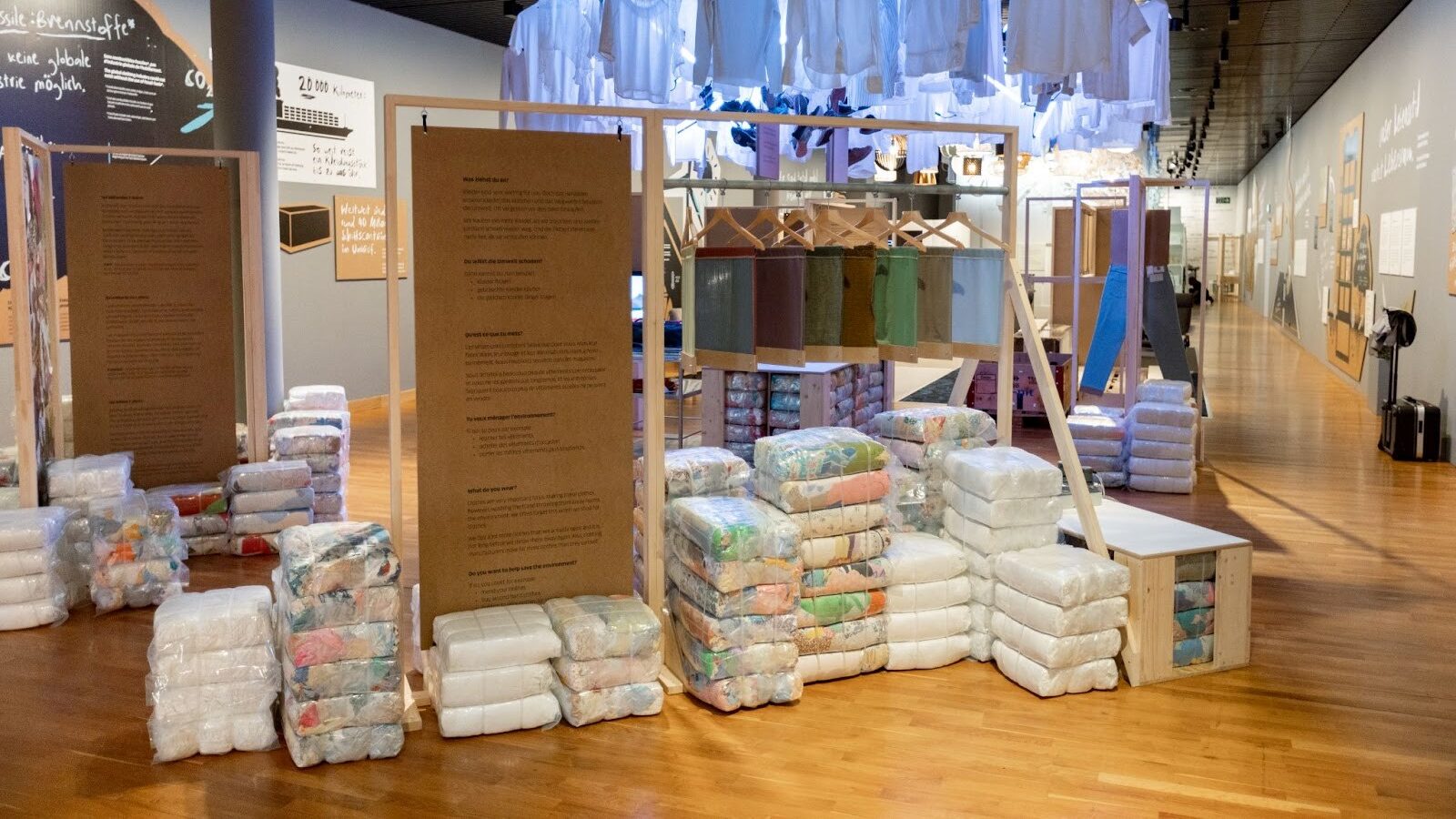
Case Example: From Sustainability Themed Exhibition to Planning for Circularity
When planning documenta 15 exhibition, the Museum Fridericianum began exploring the environmental impacts of their exhibitions. This led to lasting change, with circularity now integrated into planning and development of all their exhibitions.
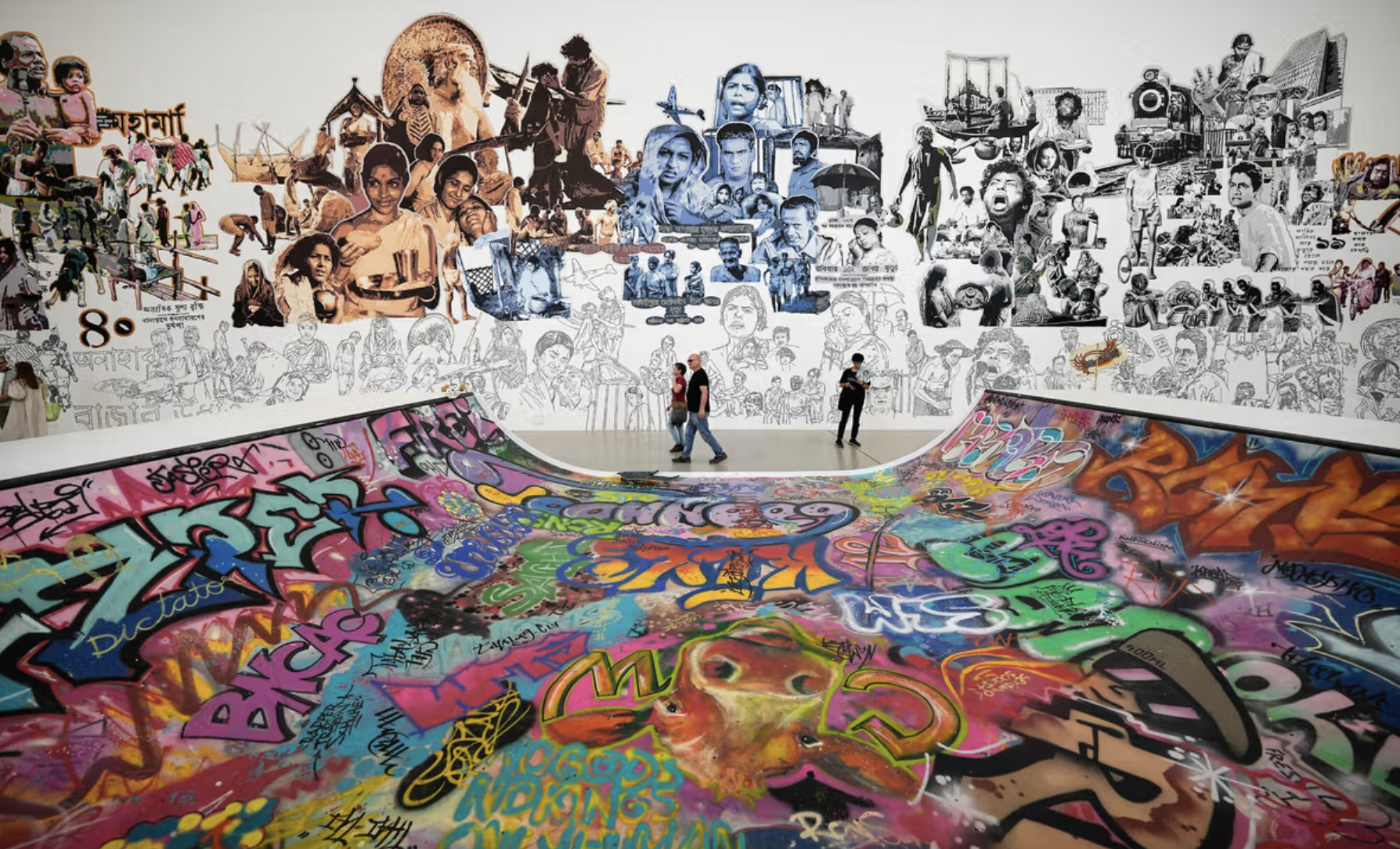
Case Example: Design Reset for Circularity at MoMA
New York’s Museum of Modern Art (MoMA) committed to advancing sustainability in its operations. The museum’s director challenged the museum and its staff to cut waste production by 50% by 2025.
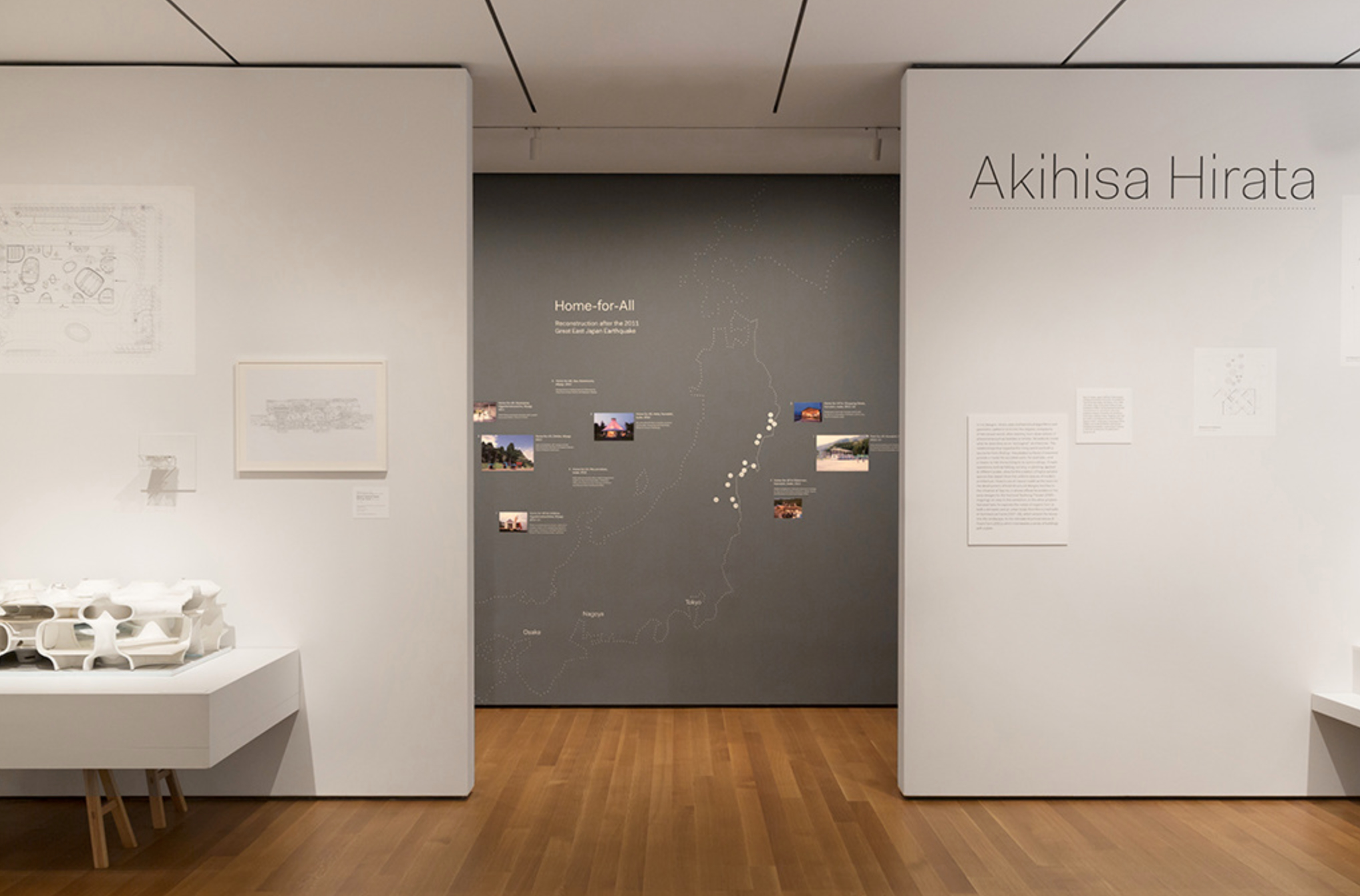
Case Example: Reclaiming Circular Design at the Museum of Vancouver
The Museum of Vancouver’s (MOV) Reclaim + Repair: The Mahogany Project challenged the design team to apply the 5Rs. It was a fitting complement to the exhibition which features pieces created from vintage mahogany.
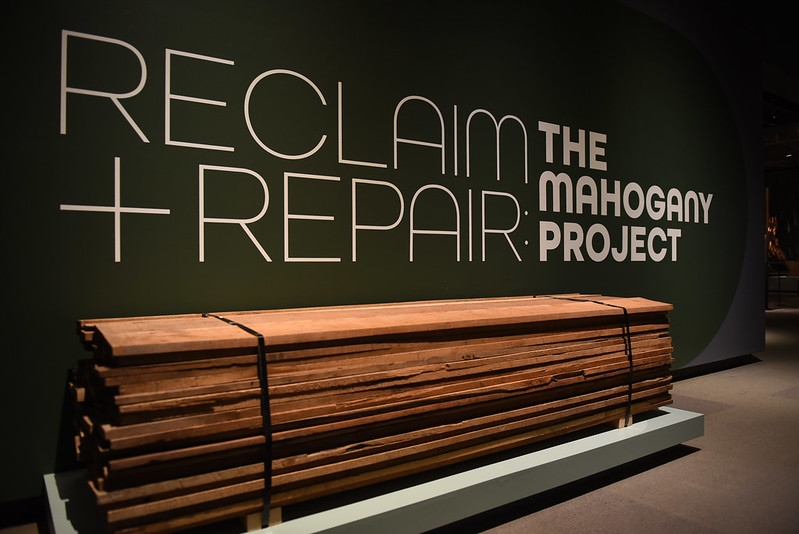
Case Example: Experimenting with Circularity to Guide Future Exhibitions
The Design Museum in London (UK) is dedicated to exploring the art and science of design. The museum applied circular principles using repurposed, upcycled and regenerative materials in their Waste Age exhibition. It was a learning curve for the museum’s team, but it inspired them to continue the practices in future exhibitions.
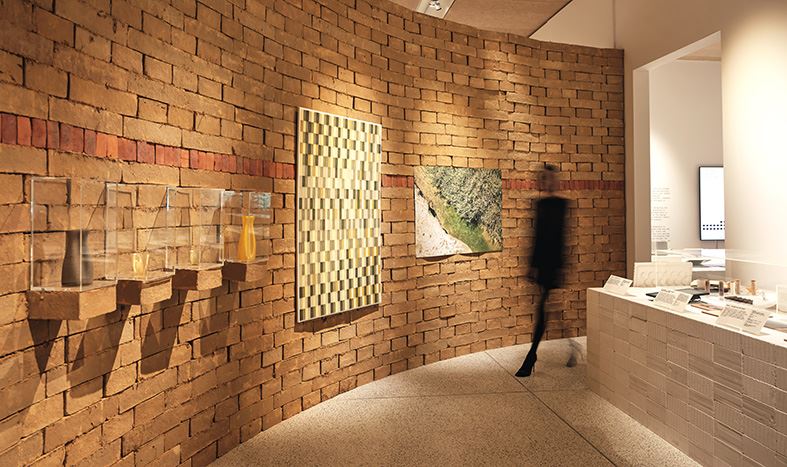
Case Example: Prioritizing Repurposing, Borrowing and Upcycling in Materials
With turnover of a large exhibition space, the Museum of Vancouver (MOV) prioritized application of circular principles and practices into planning and materials selection for The Rain People exhibition. This included a thoughtful mix of repurposed and upcycled materials.
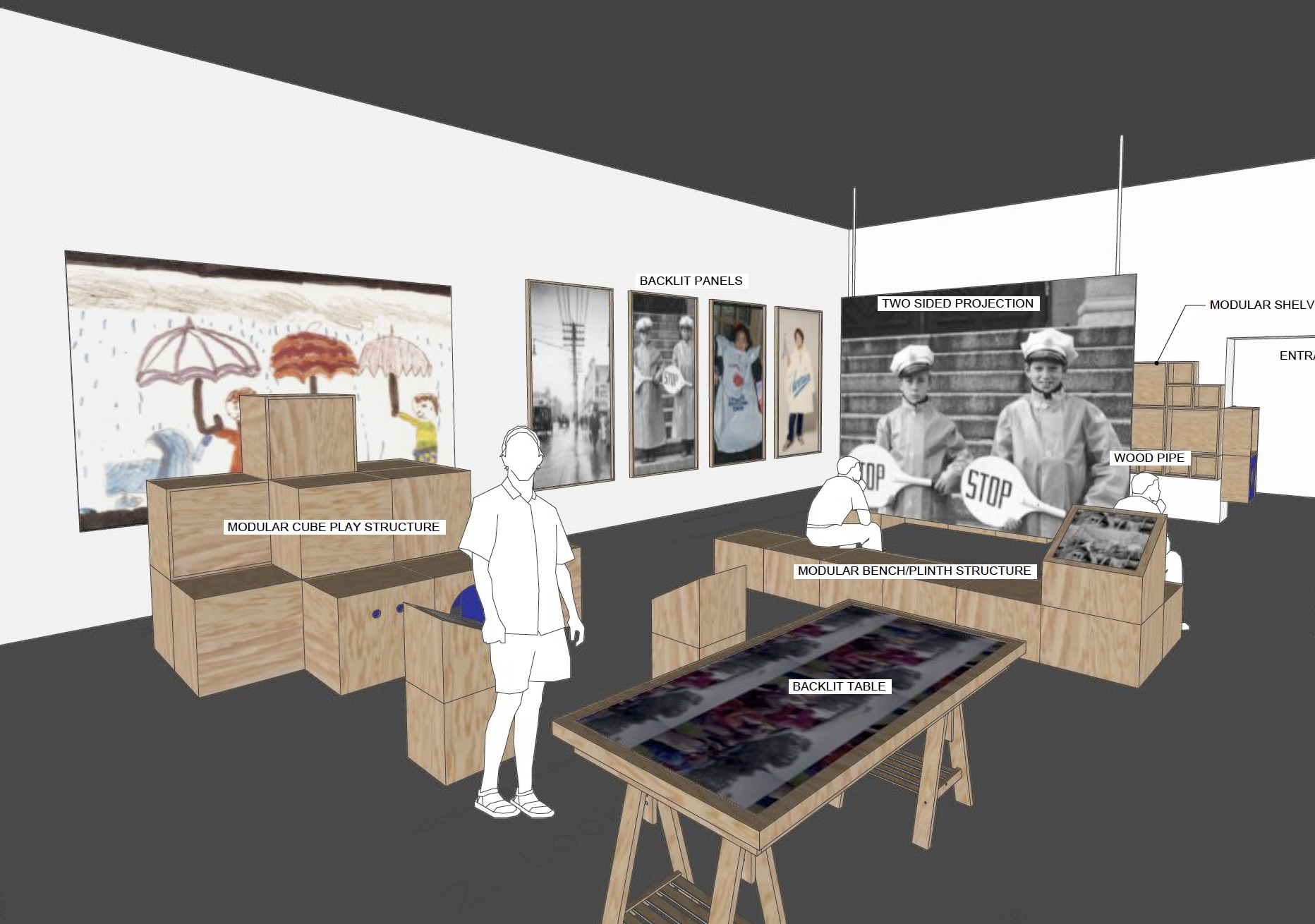
Case Example: Thoughtful Design and Building to Minimize Wood Waste
For the exhibition, Planetary Crisis – To Continue Living on this Earth, The National Museum of Emerging Science and Innovation in Tokyo, Japan set a goal to create an entire exhibition using locally sourced wood with minimal waste.
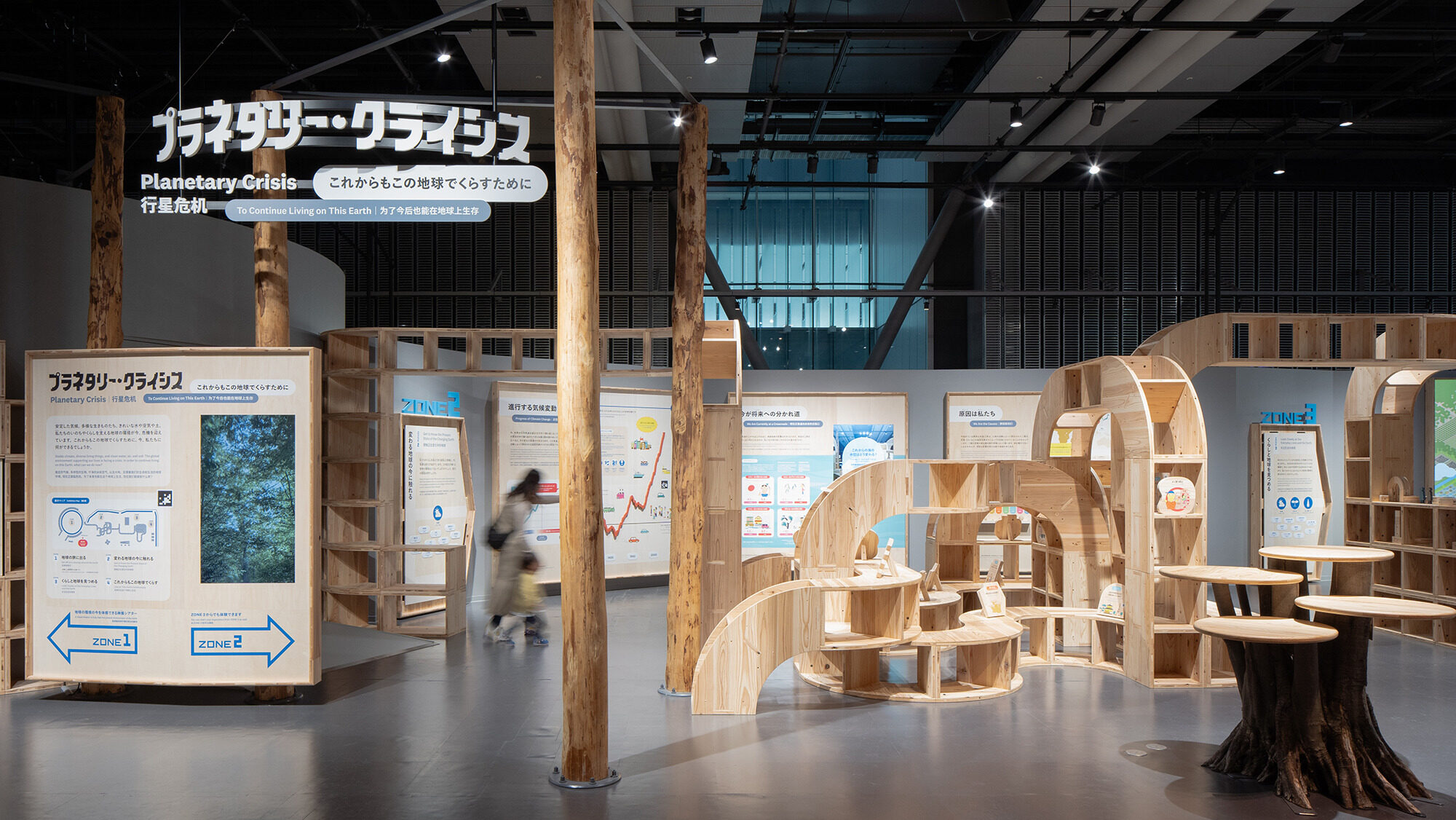
Case Example: Reuse of Unconventional Materials in Staged Environments
The stage production Winslow by the theatre company L’Escaouette in Moncton, New Brunswick, the set designer took an ecoscenography approach by creatively reusing and upcycling of ‘found’ objects and materials from the local fishing community. The main feature was a large back screen made from locally-sourced discarded fishing cables and ropes.
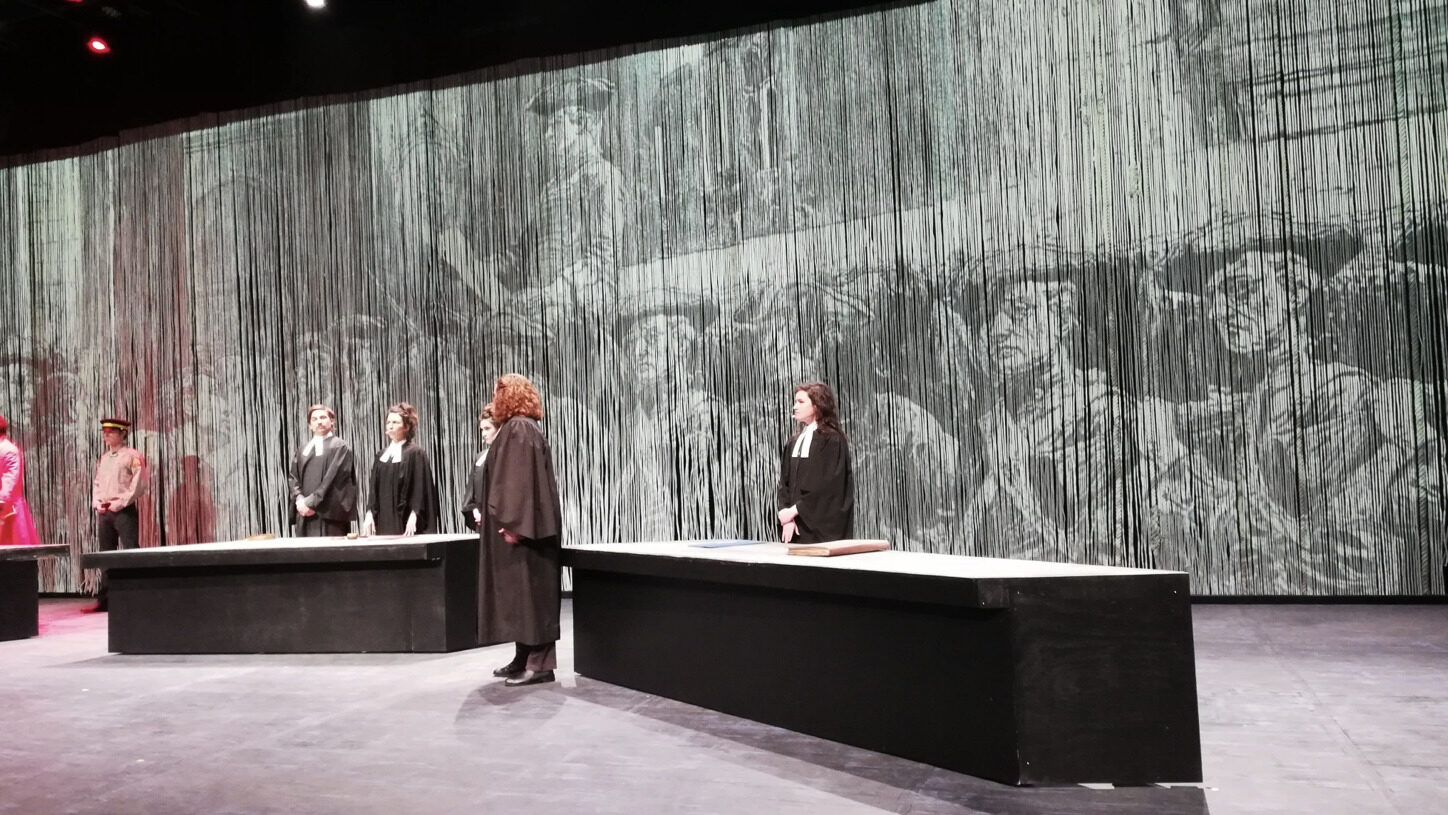
Case Example: Planning for Disassembly and Repurposing
The Museum of Modern Art’s (MoMA) exhibition, Adam Pendleton: Who Is Queen? made a bold statement with tall scaffolding holding the artist’s works. The structure made to resemble metal was built from wood and painted black, and was carefully disassembled at the exhibition’s close to allow for material reuse.
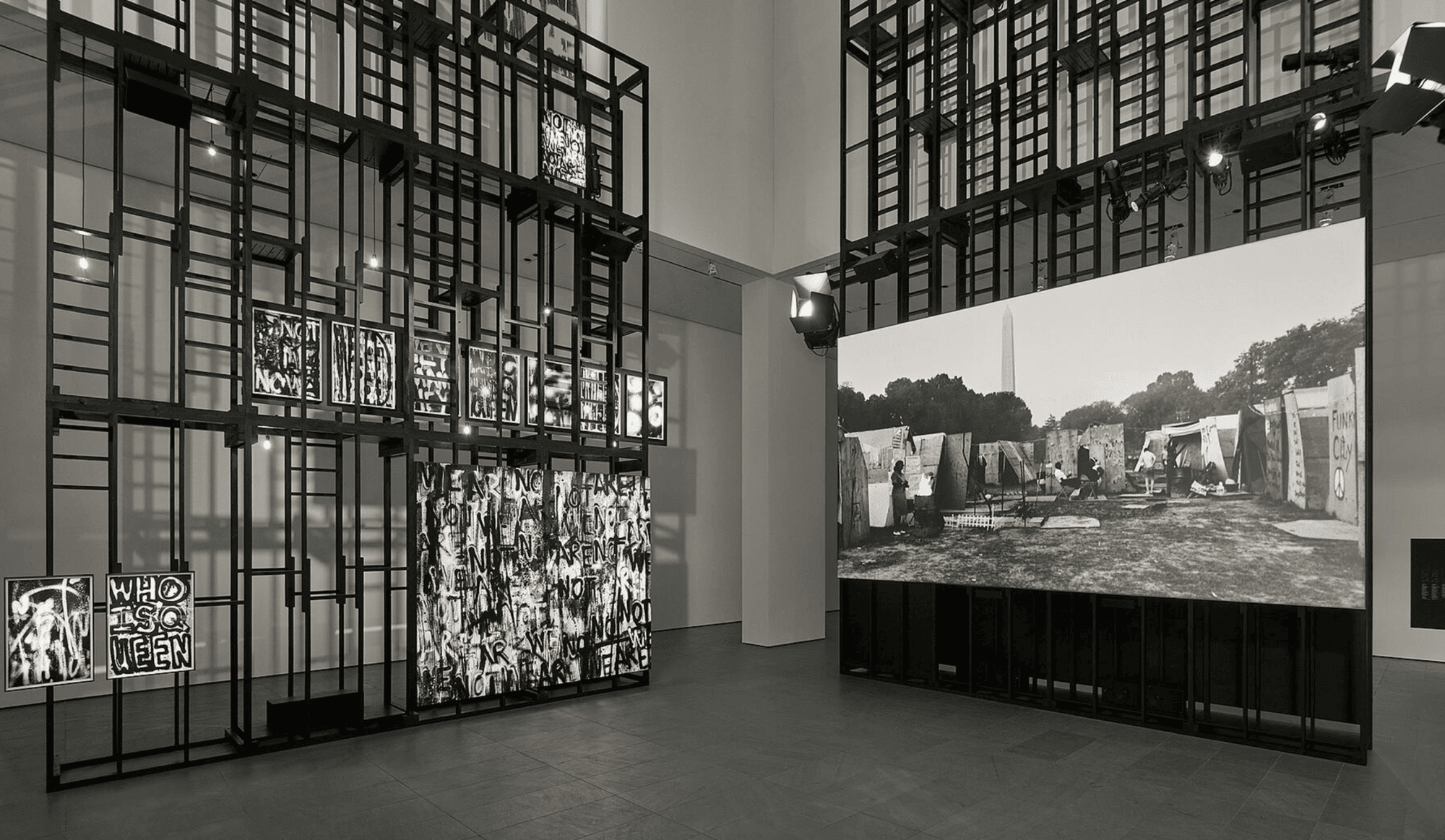
ReLondon Case Study: 59 Productions: A Stage with a Smaller Footprint
UK-based design studio, 59 Productions worked with not-for-profit, ReLondon, to develop circularity practices and lower carbon materials options for the theatre sector (but relevant to galleries and museums too).
Carton Lab: Cardboard Exhibitions and Tradeshows
A tour of Carton Lab’s innovative projects created with cardboard to reduce the environmental impact of materials and shipping associated with exhibitions and events. Projects include exhibitions, conferences, trade shows and other events, and interior design, all created with cardboard.
Articles, Videos & Websites
Green Museums Summit (Annual Virtual Conference)
MuseumNext hosts this annual virtual conference each year in February. It Features speakers from museums and galleries showcasing their circular and environmental sustainability initiatives. Fee to access the summit each year allows unlimited access without an end date.
Unbuilding Exhibitions: Harnessing the potential of deconstruction (Article)
Article in Canadian Museums Association, written by Viviane Gosselin, Director of Collections and Exhibitions at the Museum of Vancouver (MOV) Discusses unbuilding with a focus on MOV’s Wild Things exhibition –and eco-design prototype for MOV.
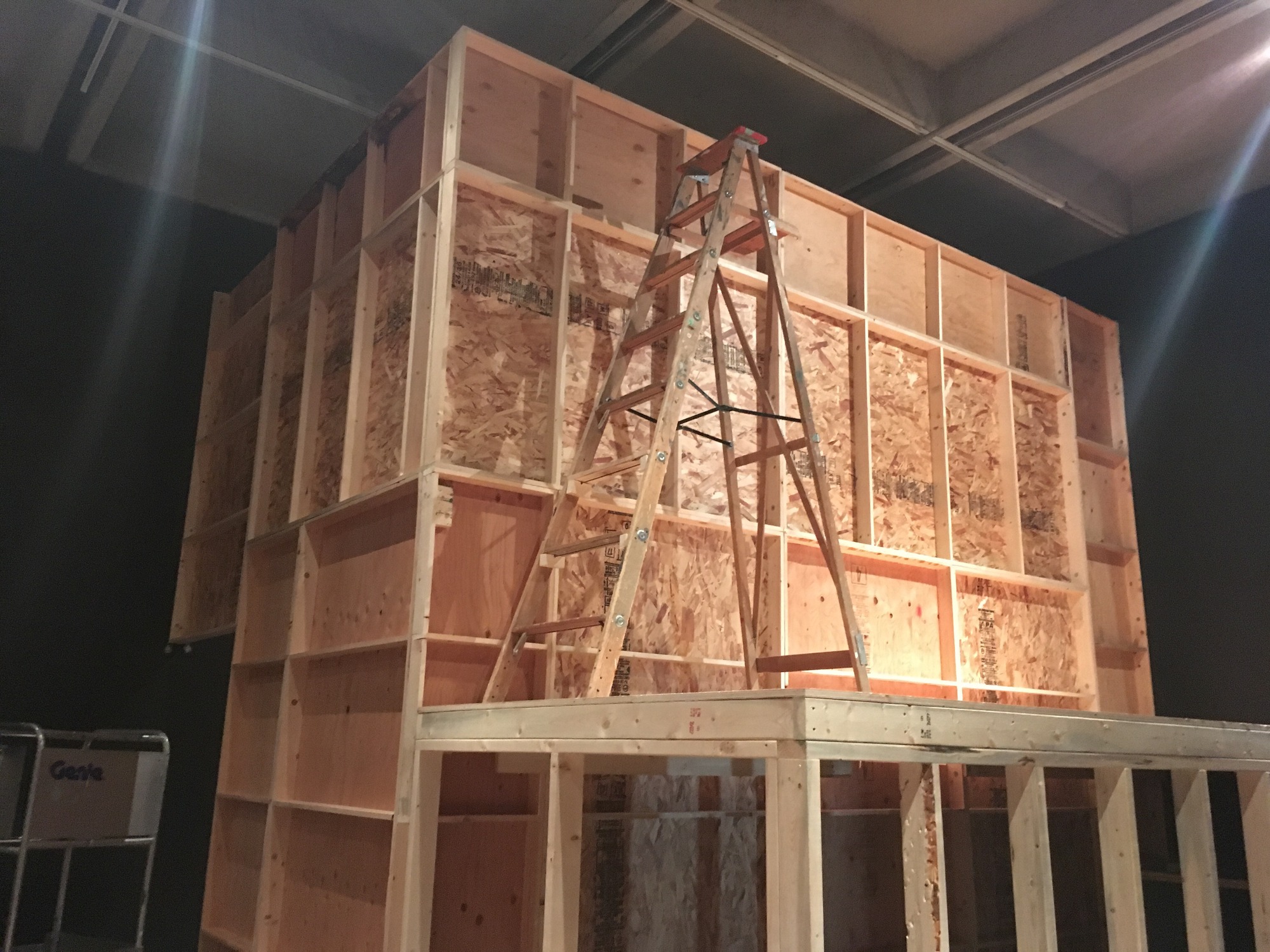
Circular Economy: Definition, Importance and Benefits (Article)
Introduction to the circular economy, what it means and it benefits. Published by the European Parliament.
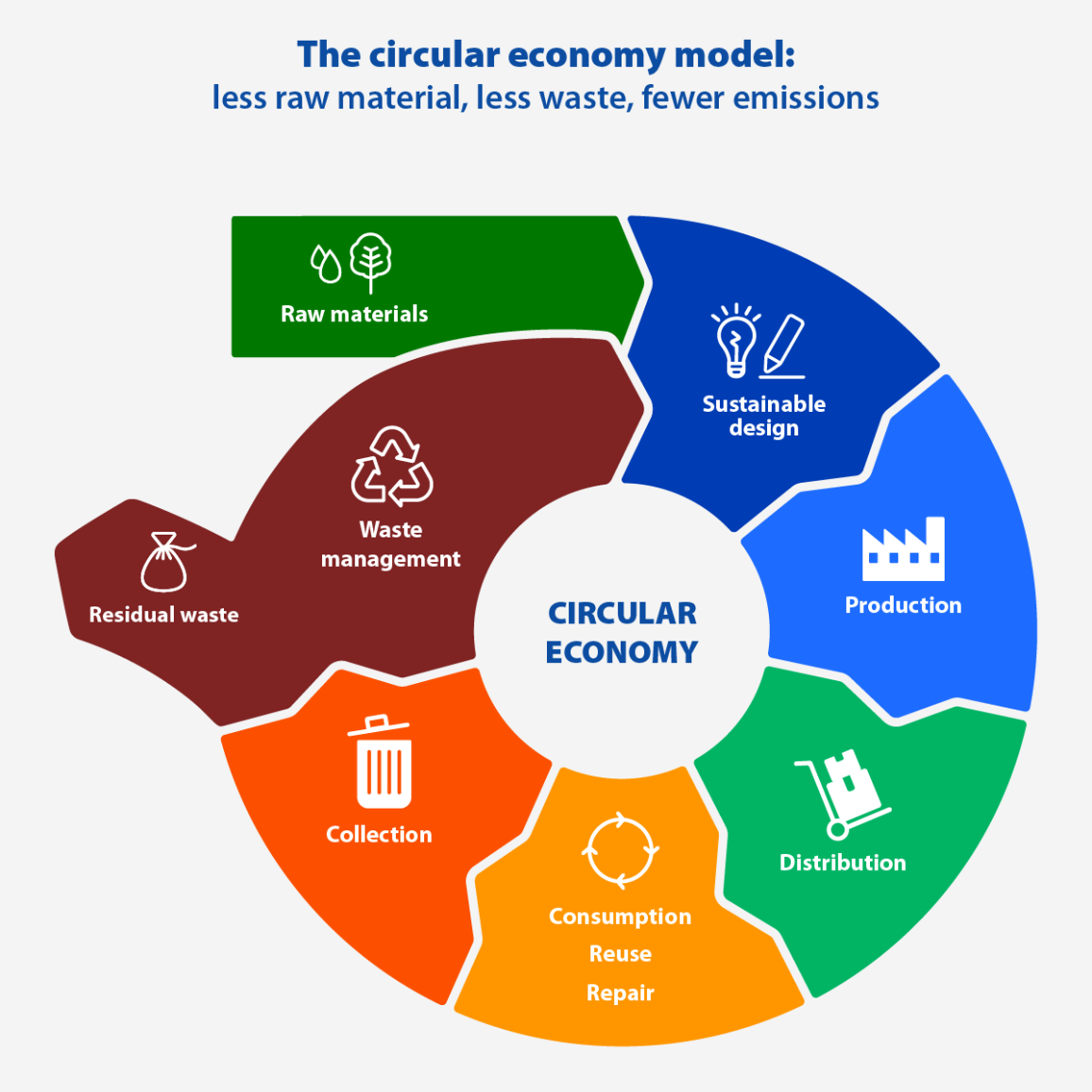
Circular Economy for Museums (Website)
Museums Galleries Scotland hosts a website with case studies, resources and discussion of circular economy opportunities for museums.
Circular Museum: Systems Design to Tackle Waste (Videos)
A collaboration between MoMA’s Ambasz Institute and ART 2030, The Circular Museum features six 90-minute discussions with panels of directors, curators, and designers from leading galleries and museums around the world (2023). It discusses aspects of circularity and environmental sustainability in their exhibitions and operations.

The Circular Economy Takes Centre Stage! (Article)
Article in Veolia on initiatives to integrate circularity principles and practices to reduce waste and greenhouse gas emissions in the performing arts sector in France. Several brief examples of theatres and festivals achieving results.
Circular Design On and Off the Stage with Sandra Goldmark (Podcast)
In this episode of the Art + Climate series on the Tech in the Arts podcast, Sandra Goldmark, Associate Professor of Theatre at Barnard College and the Senior Assistant Dean for Interdisciplinary Engagement at the Columbia Climate School, shares her insights A professor, designer, and entrepreneur, Sandra’s work centres on the circular economy and regenerative climate strategies.
The Circular Construction Guide: 5 Ways to Embrace Circularity (Guide)
A brief guide to circular practices in construction by Hilti. It focuses on the buildings sector but the tips and recommendations are relevant to development of staged environments.
How to Design a Building on Circular Economy Principles (Article)
Cullen Studio provides a guide for architects on designing out waste in new projects and creating durable buildings that can adapt and evolve over time.. The discussion has practical ‘how to’ tips that are relevant to staged environments.
Standards for Circularity in Construction (Reports)
CSA Group publishes research reports on circularity and standards, as well as information on new initiatives and strategic collaborations on circularity in the construction section. Their goals is to help support the transition of Canada’s construction sector to a circular, net zero, and low-carbon economy.

Five Key Principles in Designing Regenerative Buildings (Article)
Article published by the US Green Building Council, on design principles for regenerative building to support net zero goals and healthy building strategies. The building industry is promoting sustainable and regenerative design among its practitioners; the arts sector may find relevant learnings from their progress.
Beyond Sustainability: Adopt Regenerative Materials (Article)
Article on low carbon and regenerative materials posted in Tocco (2023). It focused on the construction sector but also highlights interesting facts about greenhouse gas emissions associated with materials.
Regenerative Building Materials: Seven Questions to Ask While Designing (Article)
A brief guide to regenerative materials, published online by Land Art Generator in 2020. Also, check out some of Land Art Generator’s impressive installations elsewhere on their website.
Ecoscenography (Website)
Website created by ecoscenography designer Tanja Beer explores the intersection of theatre performance and ecological design practice. Be sure to check out their accompanying Facebook group and blog, which foster dialogue and provide a space to share ideas, links, events, and articles related to ecological thinking in performance-making.
Place-based Ecoscenography: Interview with Noémie Avidar (Article)
Article on Ecoscenography website. Scenographer, Noémie Avidar discusses her perspective on ecoscenography and shares how she applied in her set design work on a theatre set for L’Escaouette theatre company in Moncton, New Brunswick.
Potential Benefits of the Circular Economy: On V&A Conservation Practice and Materials
Article examining circularity in the context of conservation practice at the Victoria and Albert Museum. Briefly discusses how a circular economy can help the museum to understand and enhance the environmental sustainability of operational procedures by reusing and recycling materials and by consciously choosing materials that are not hazardous to the environment or human health
Images
1. Planning
The first step in circular exhibition development is planning. When planning an exhibition or theatre set, from the outset it is crucial to consider how to integrate circularity into all the other elements.
Inspiration
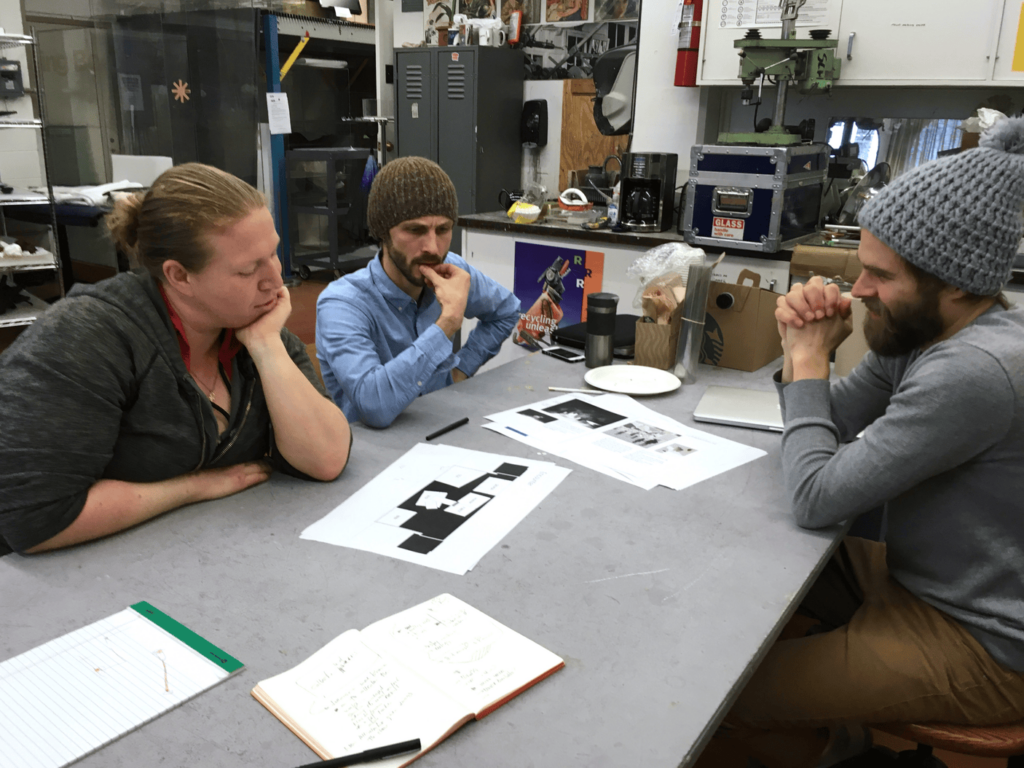
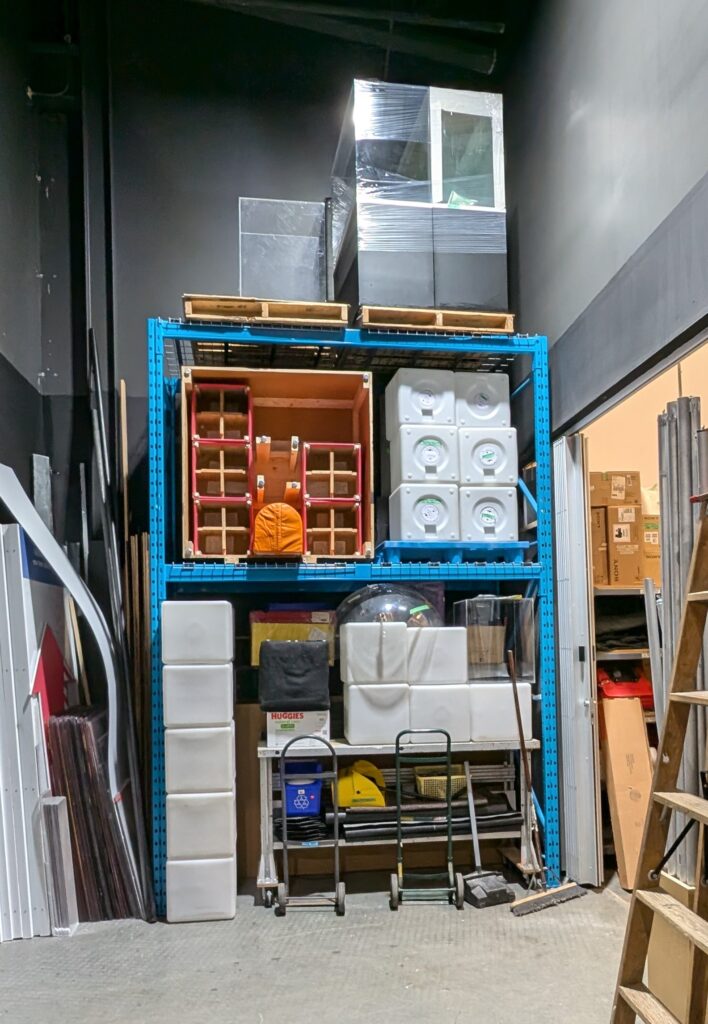
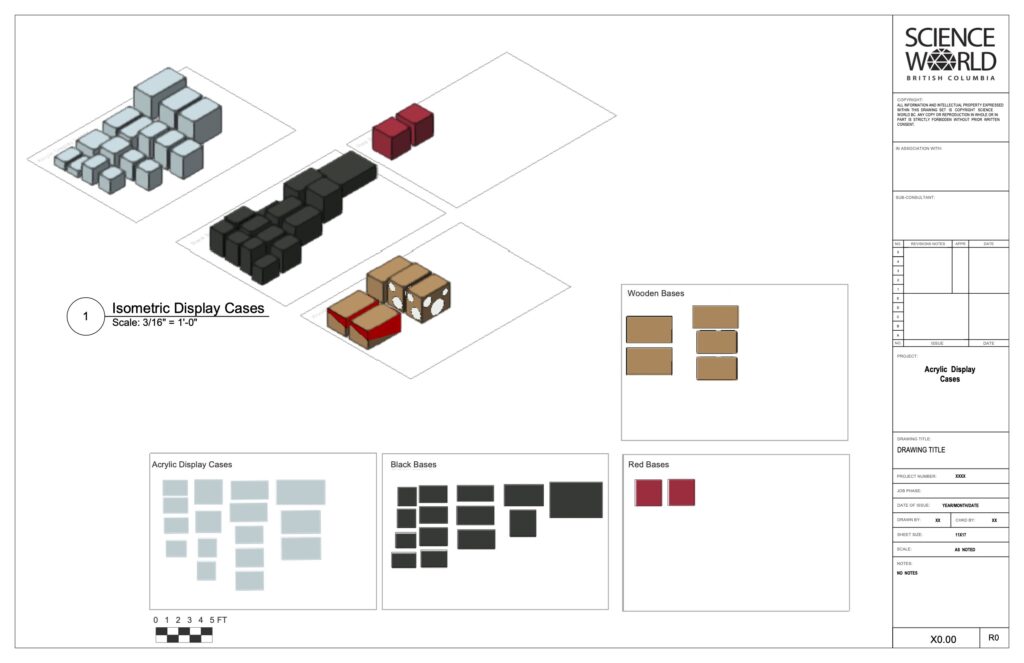
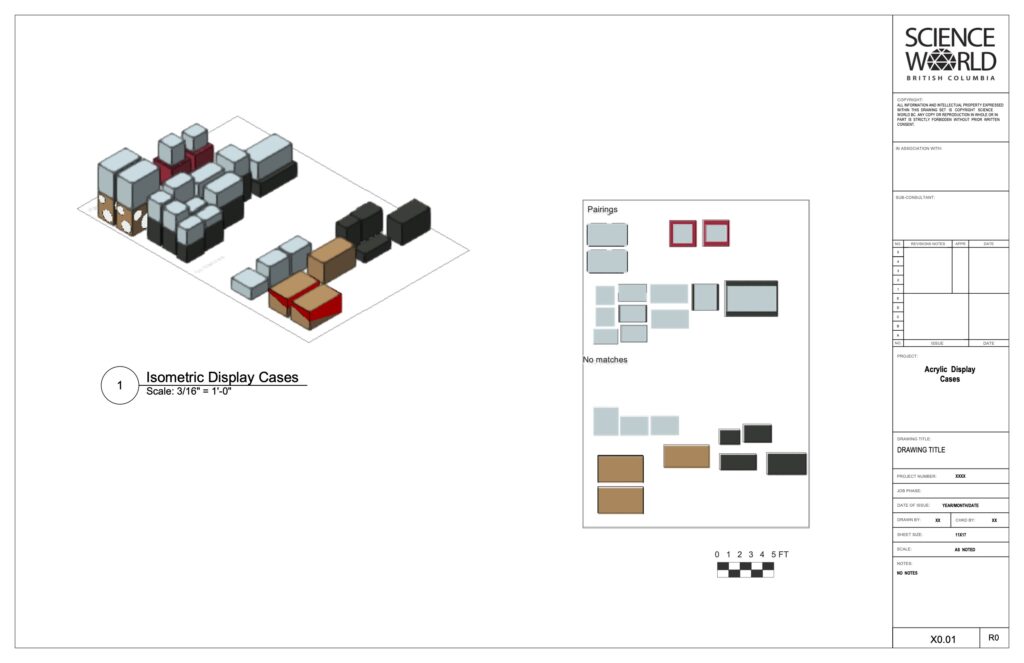
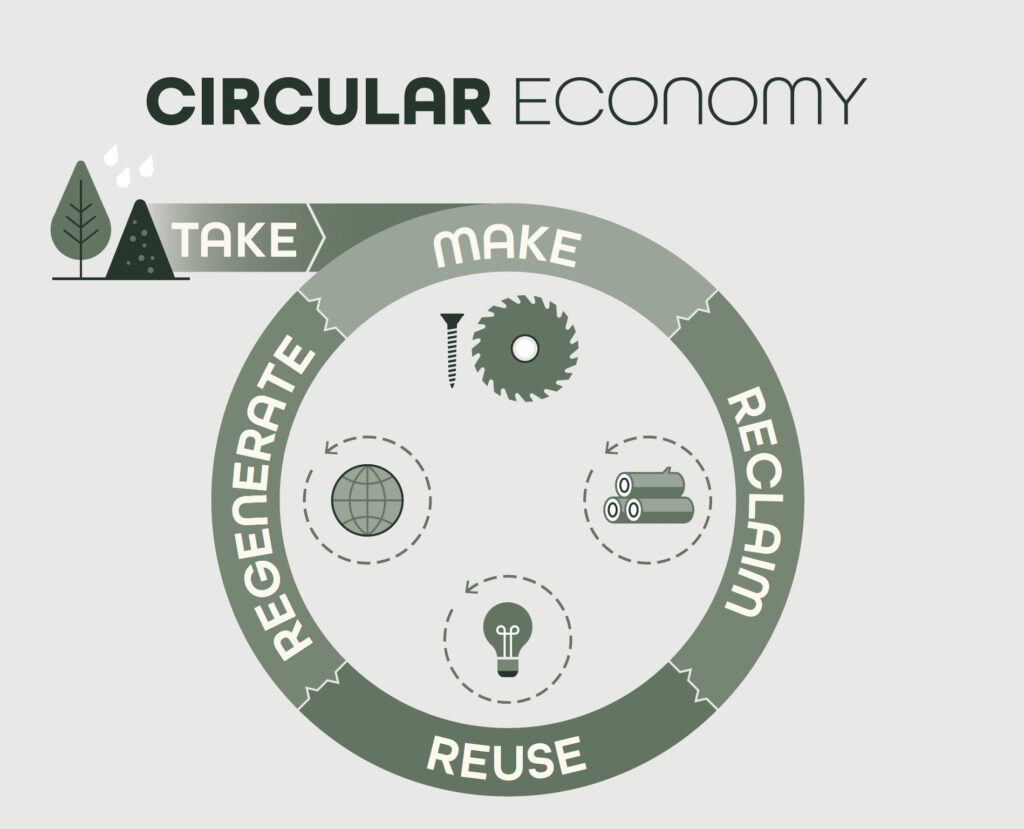
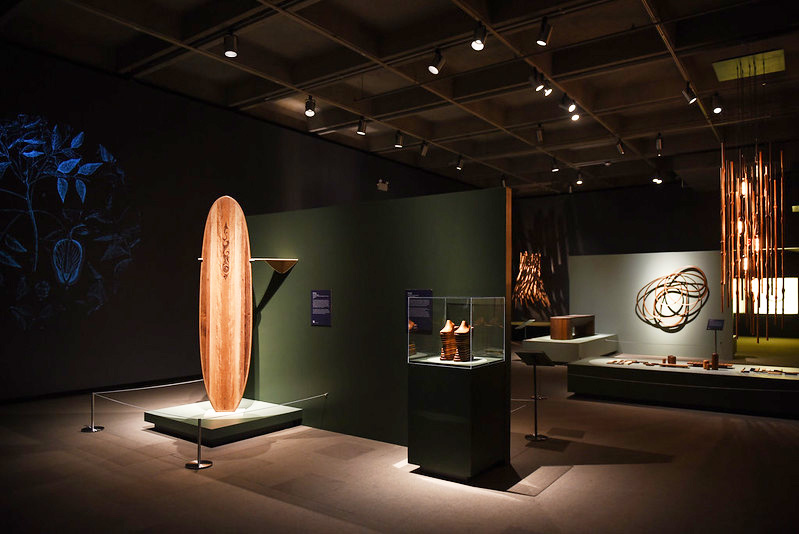
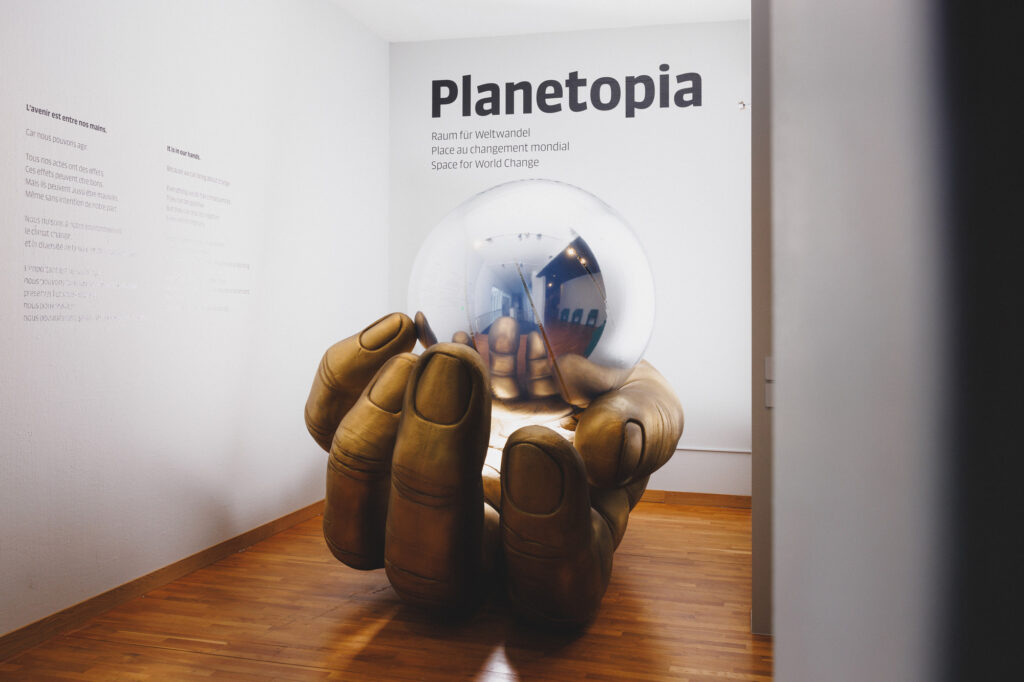
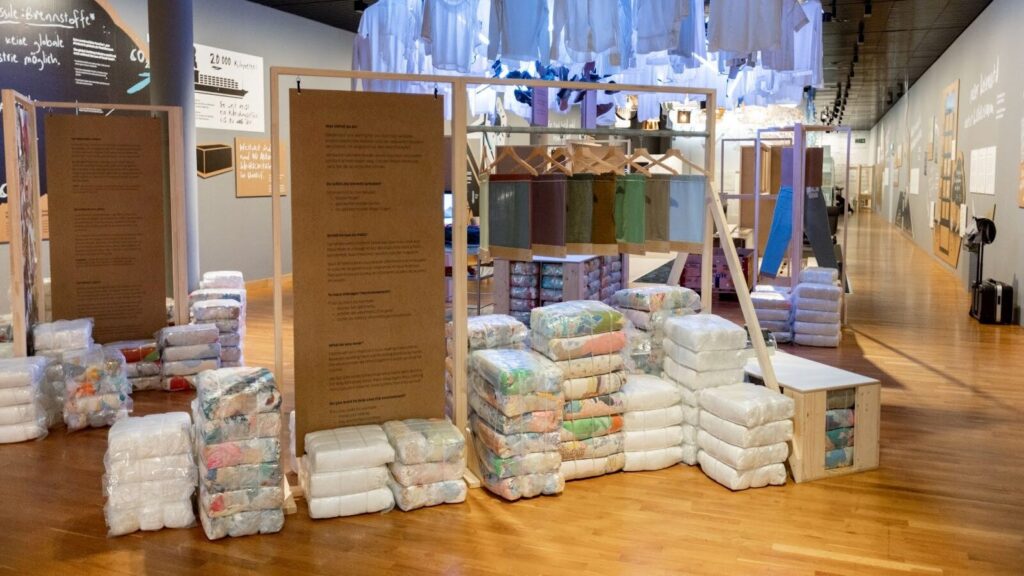
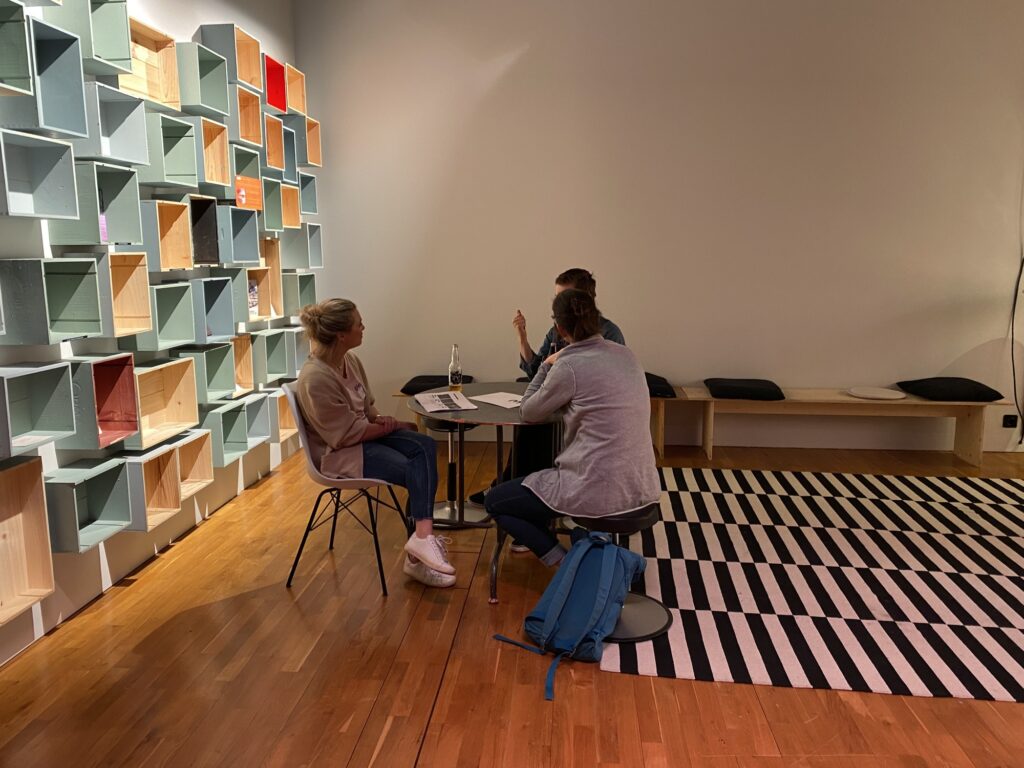
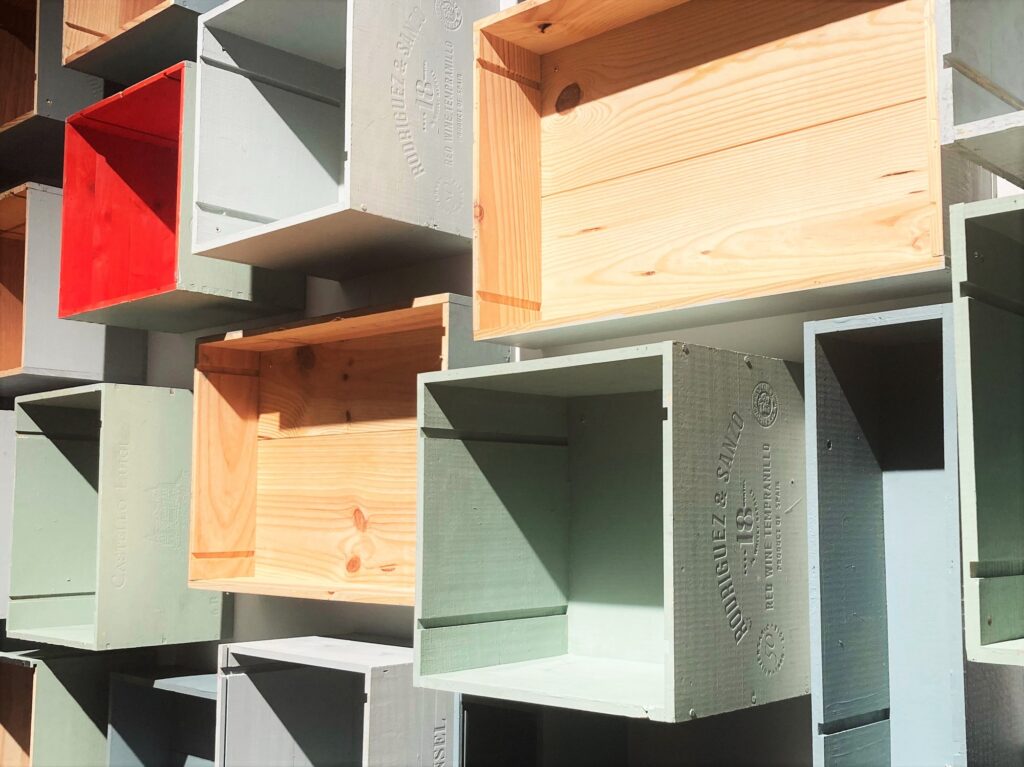
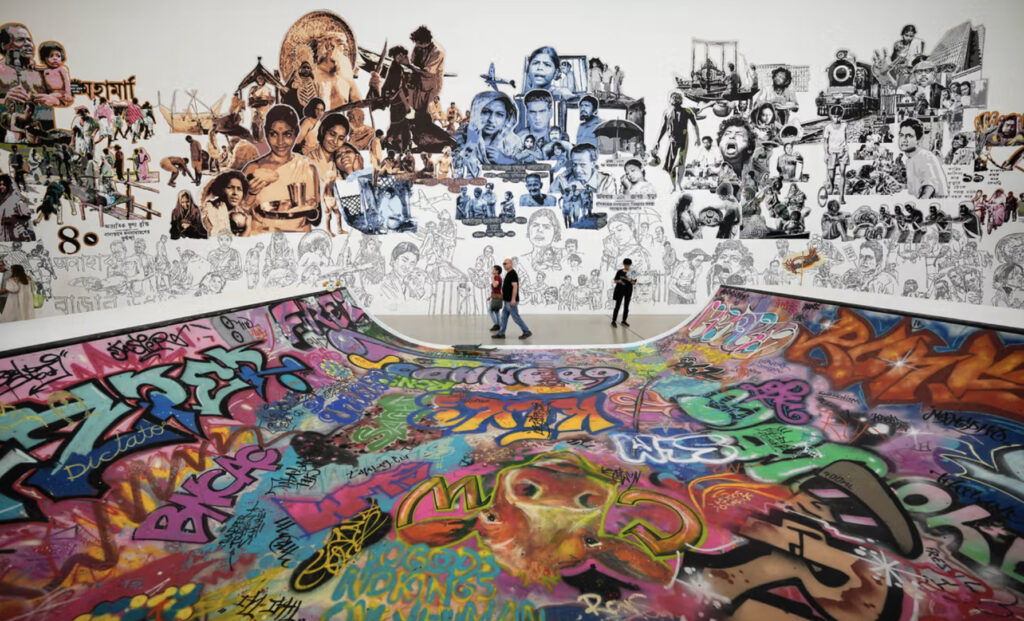
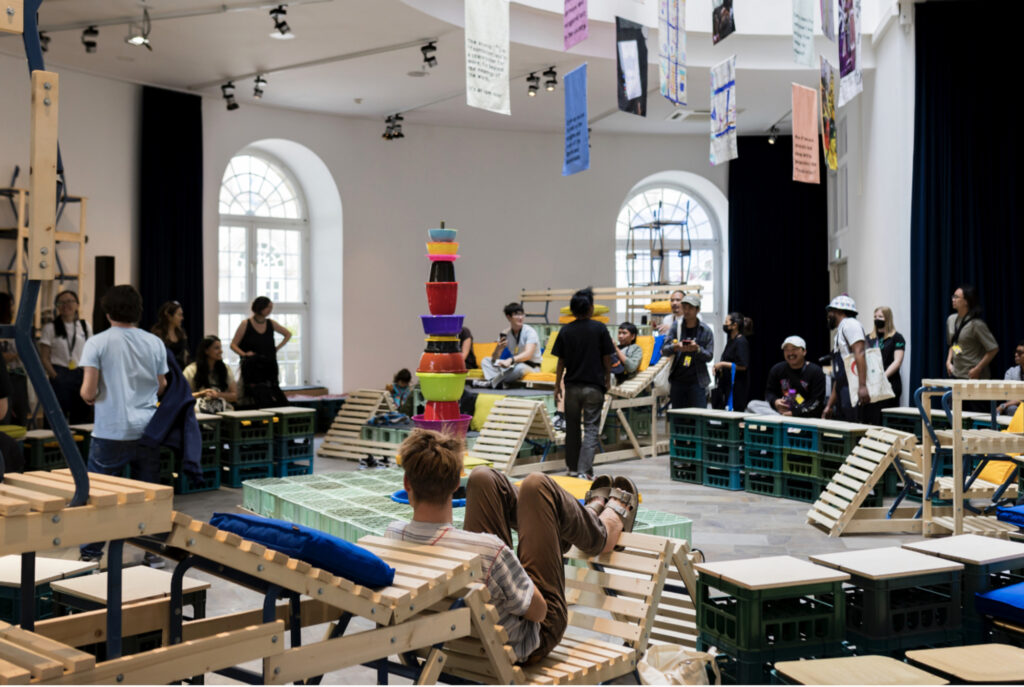
2. Design
Instead of viewing circularity as a constraint to originality, challenge designers to embrace it as an opportunity to create engaging and innovative solutions while avoiding and reducing waste.
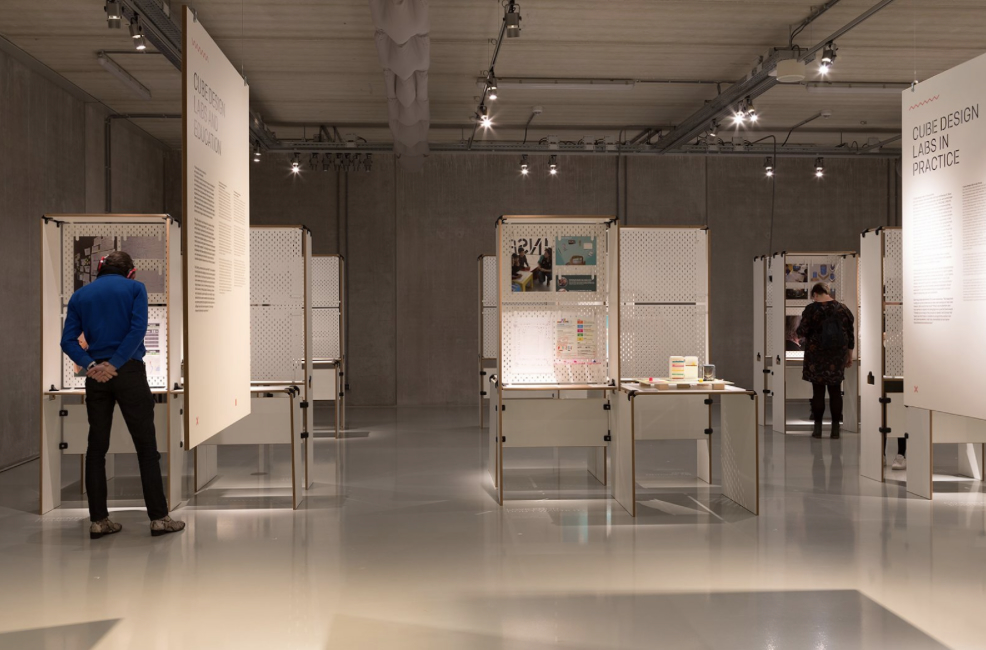
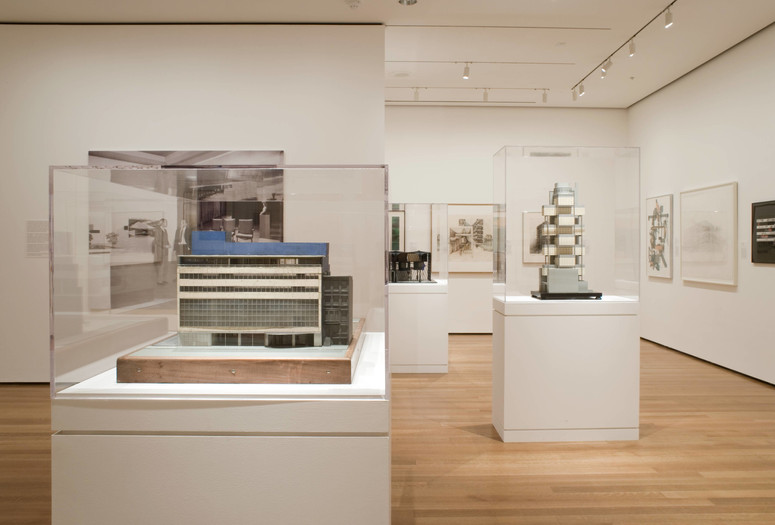
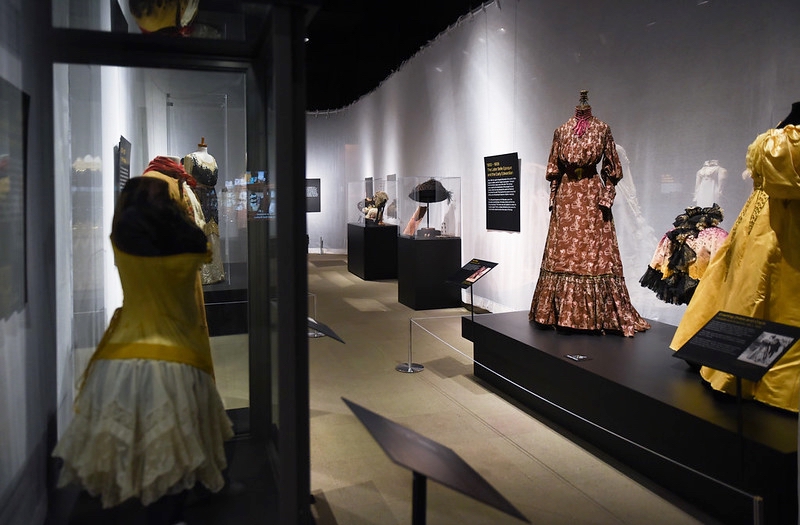
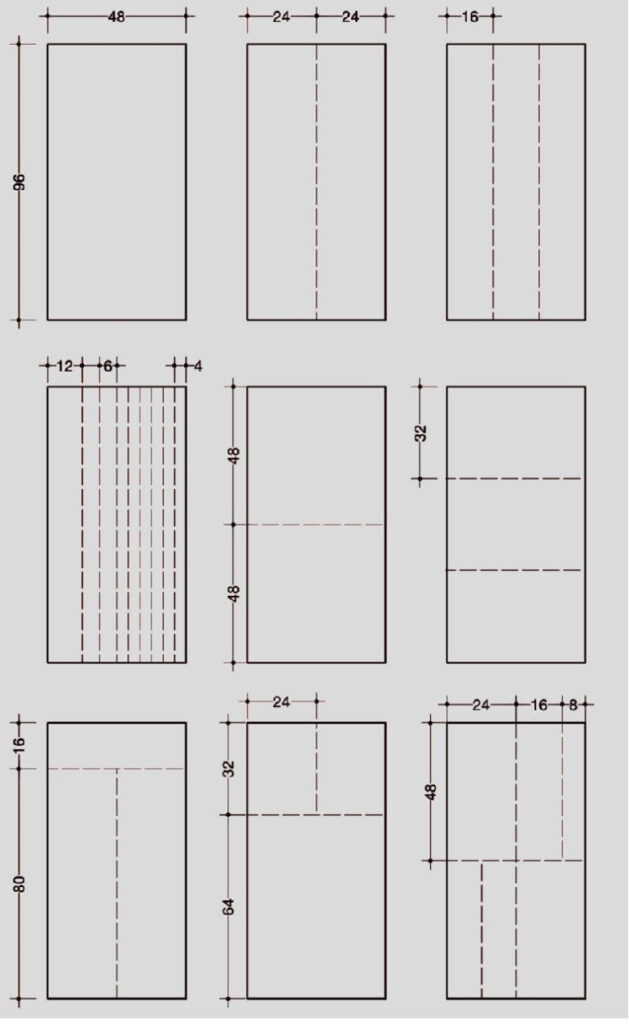
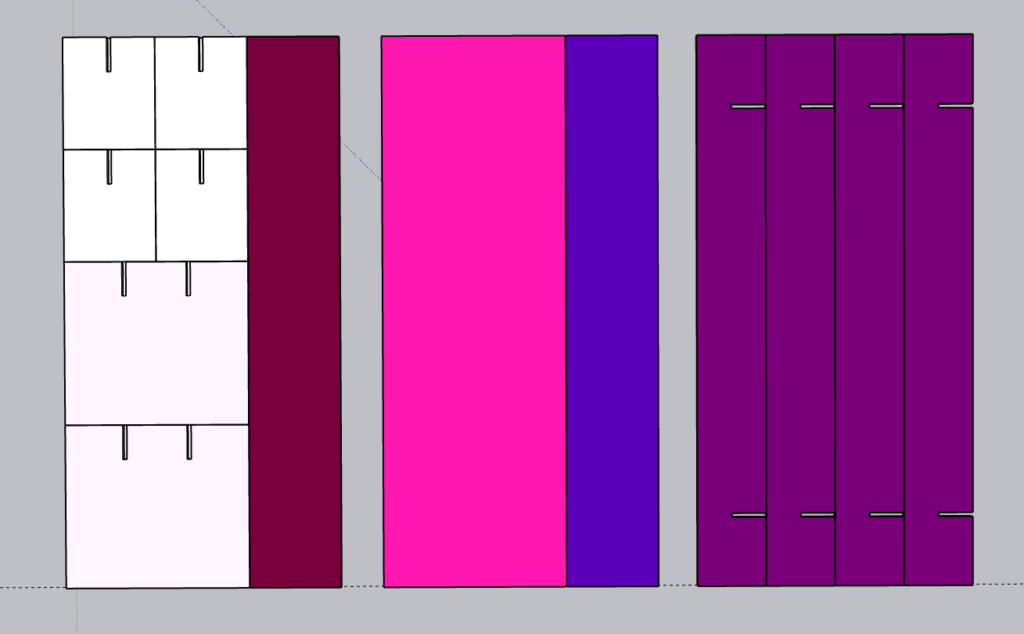
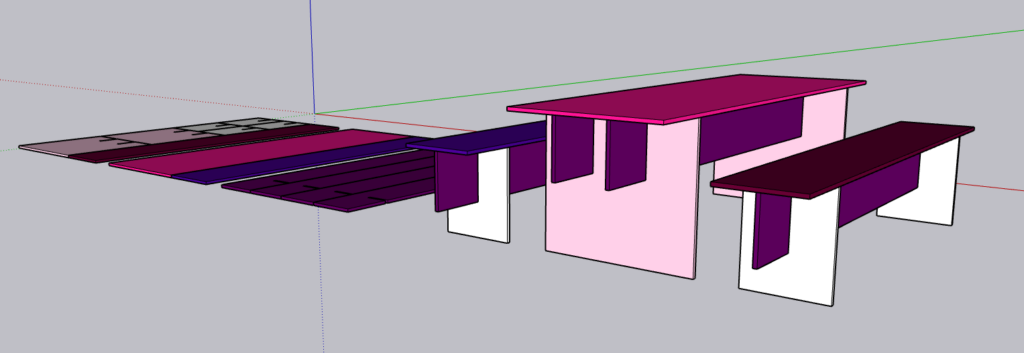
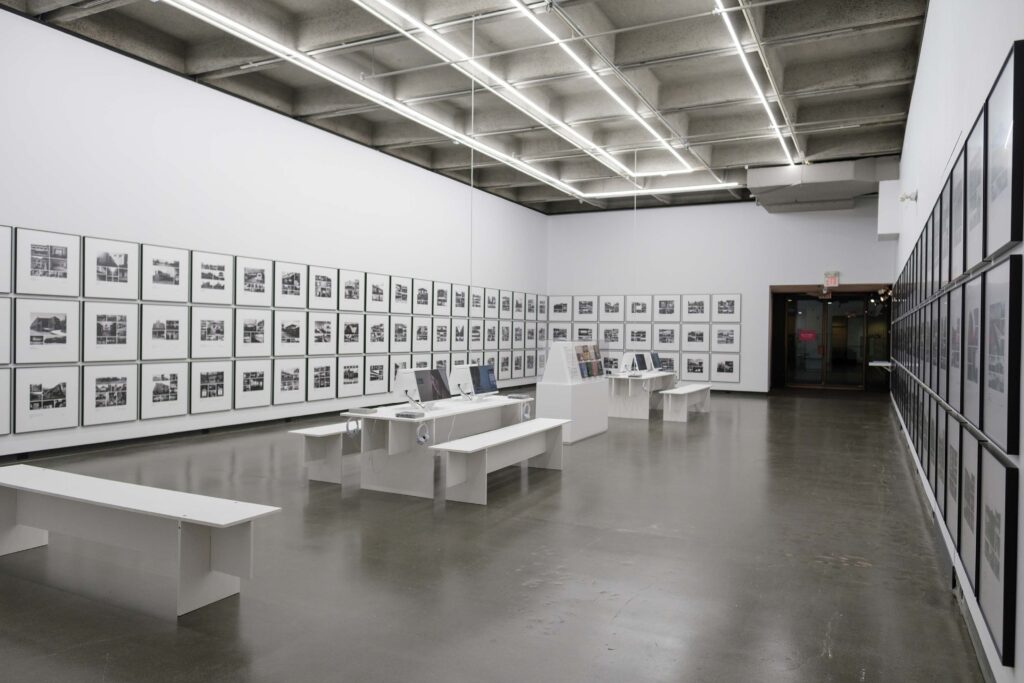
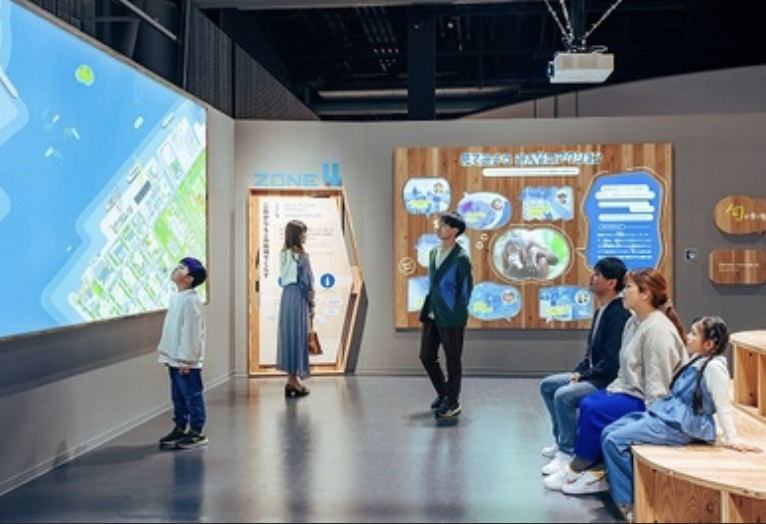
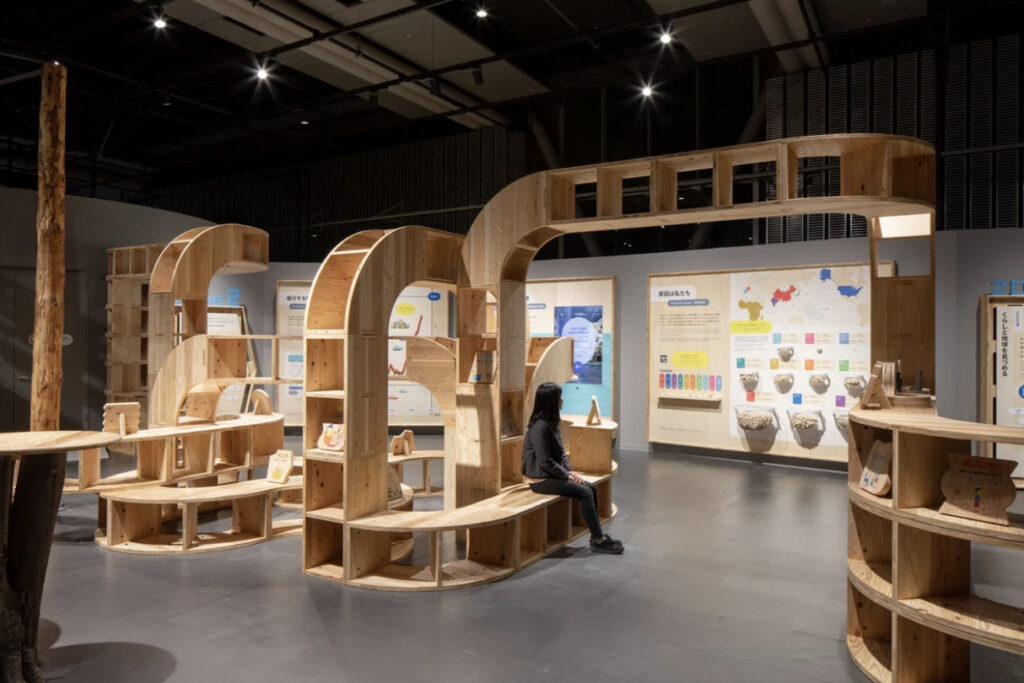
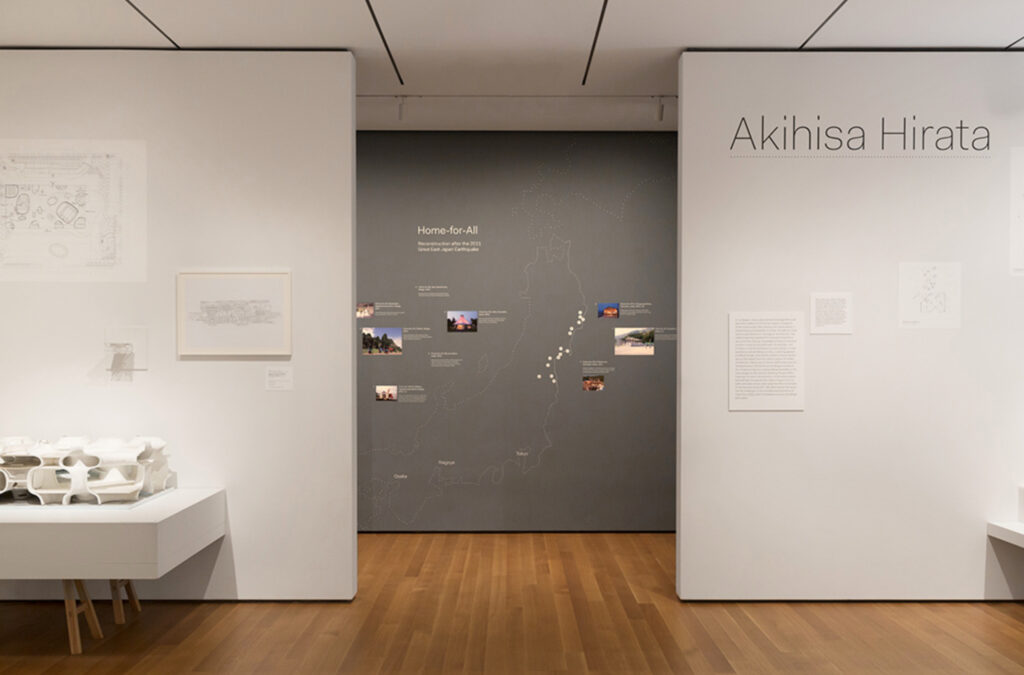
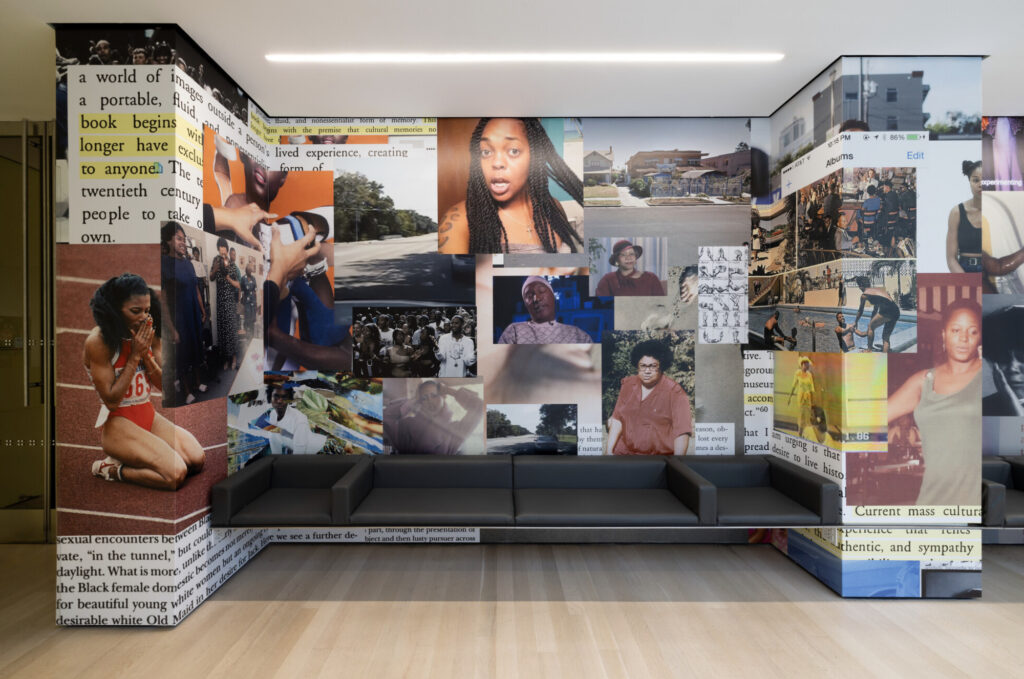
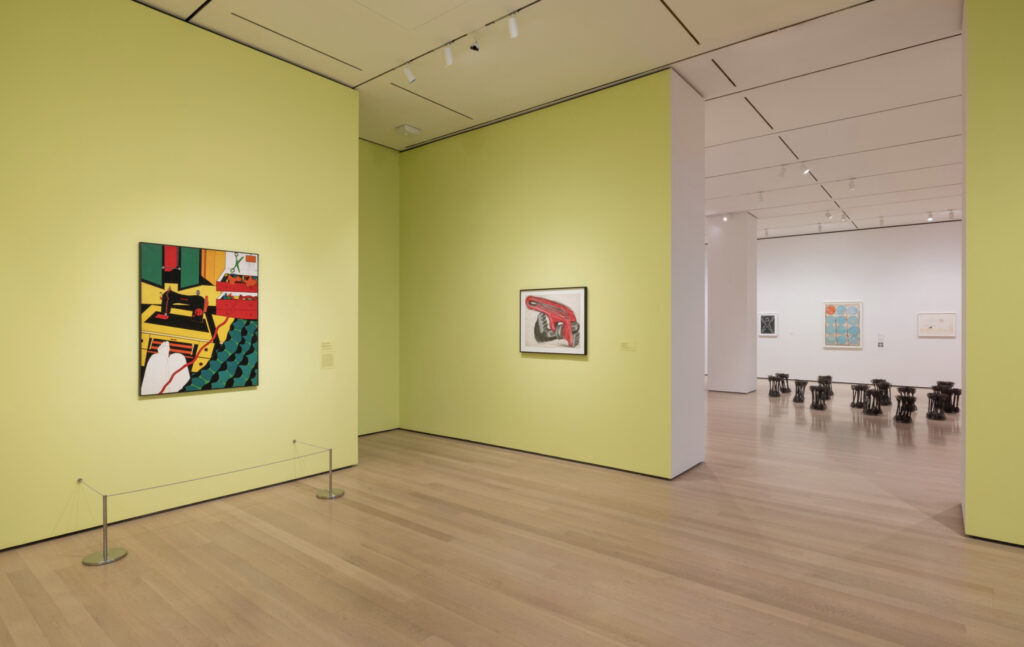

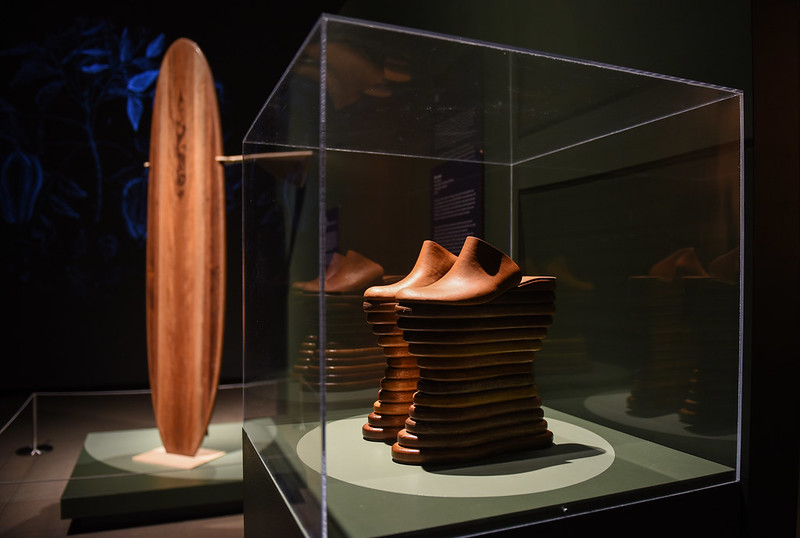
3. Materials
Consider used props and materials in your exhibitions and materials with lower environmental impacts. Extend the life of new and used materials across multiple exhibition projects to avoid waste.
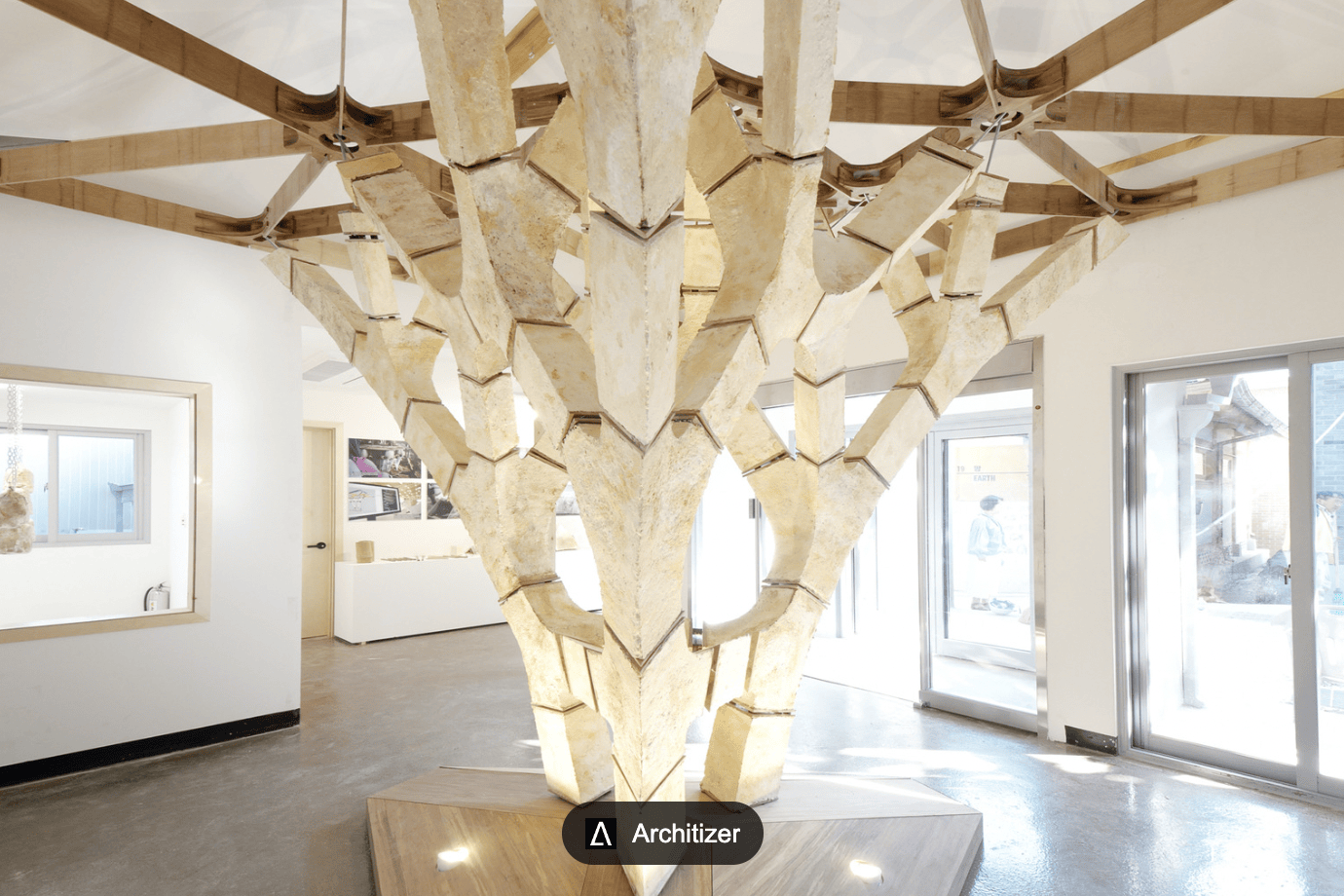
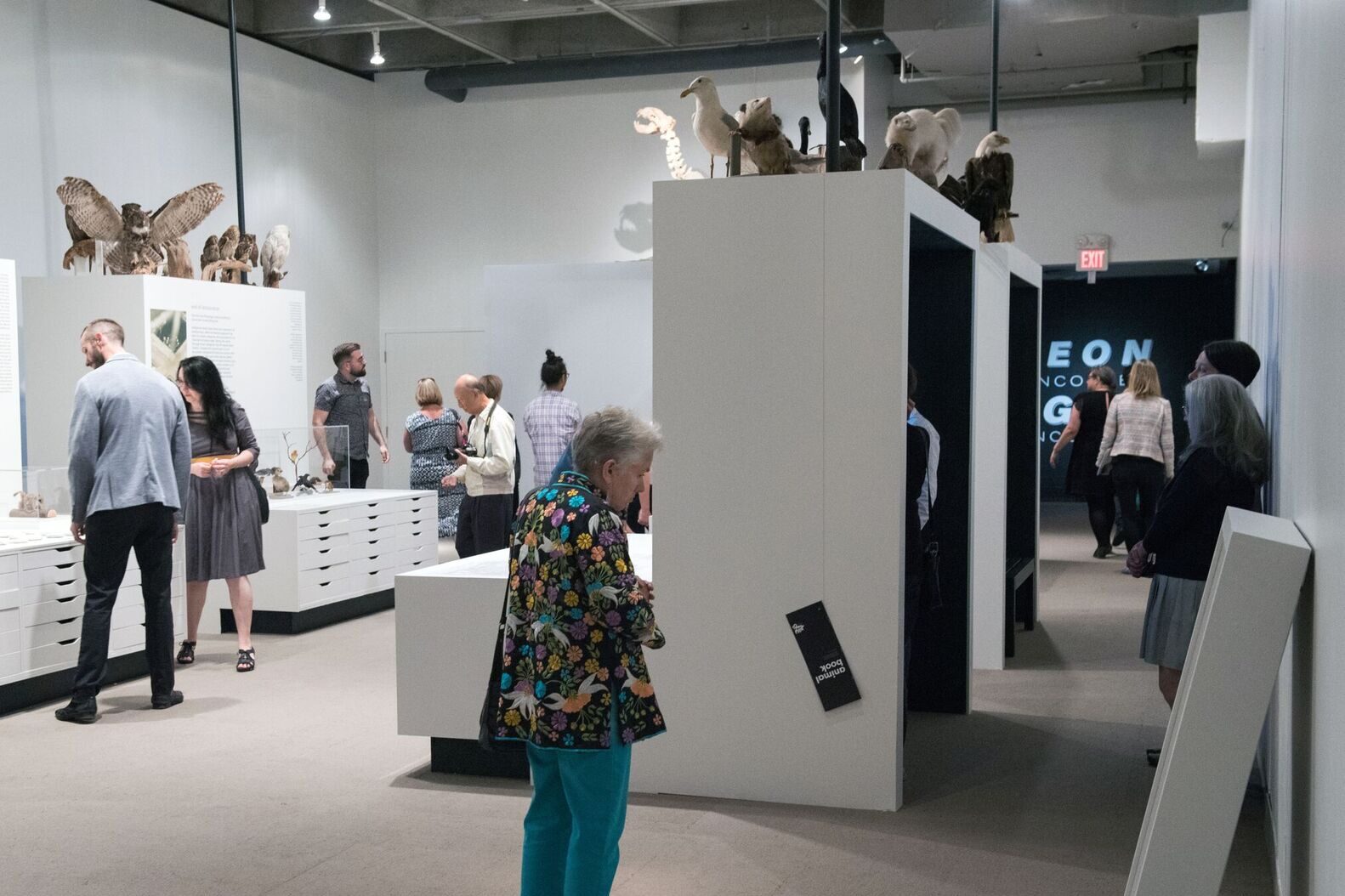
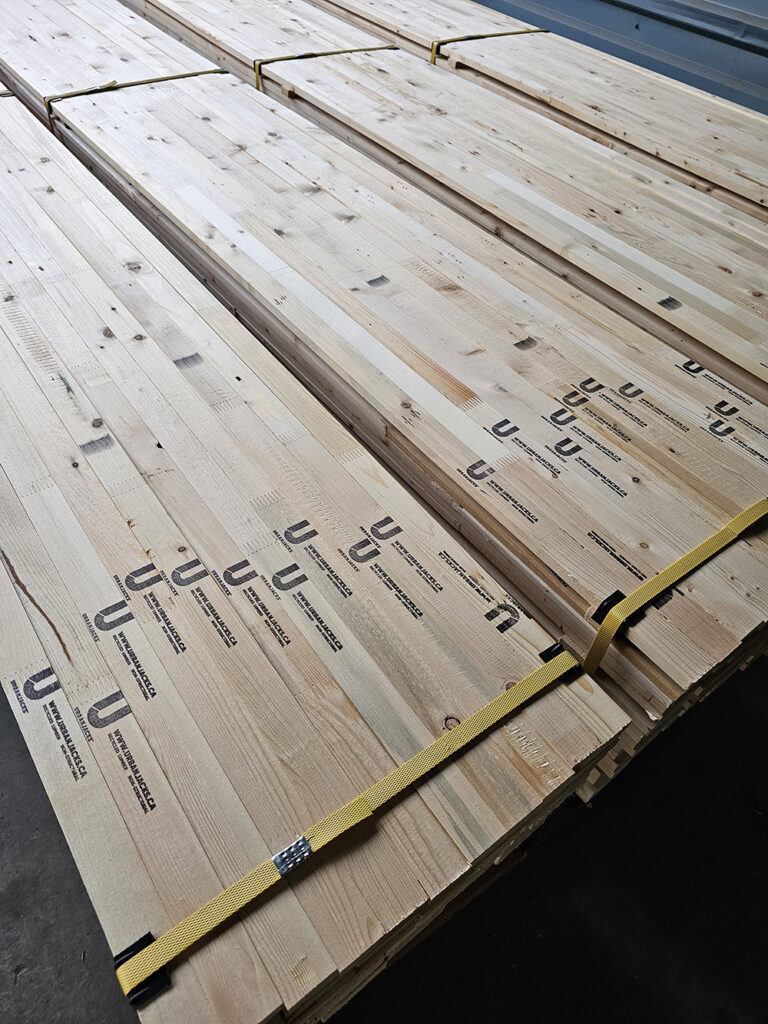
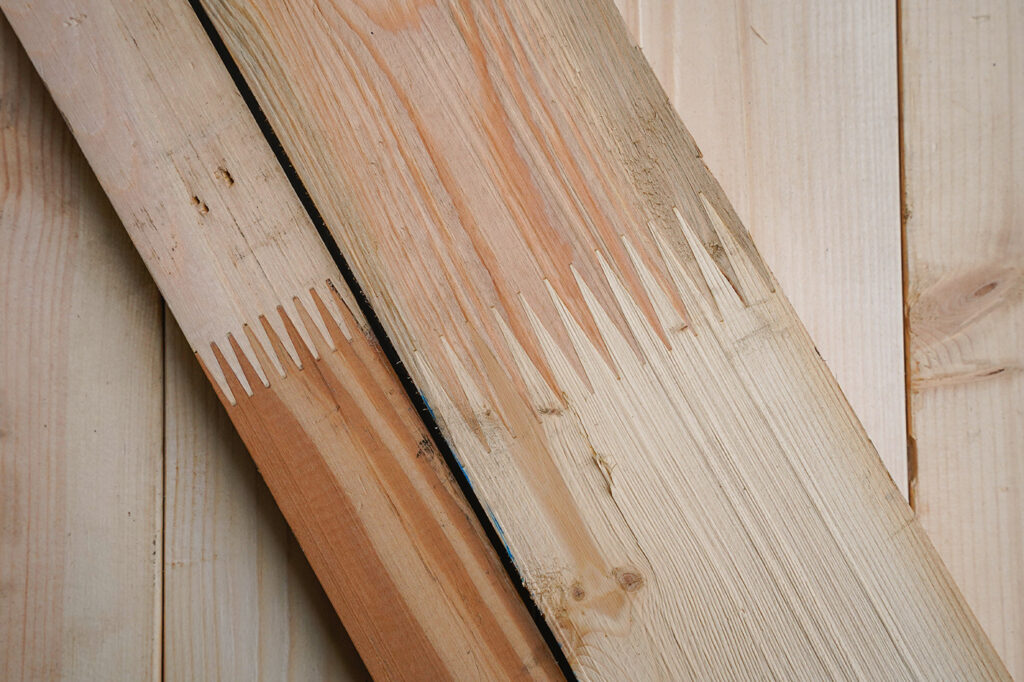
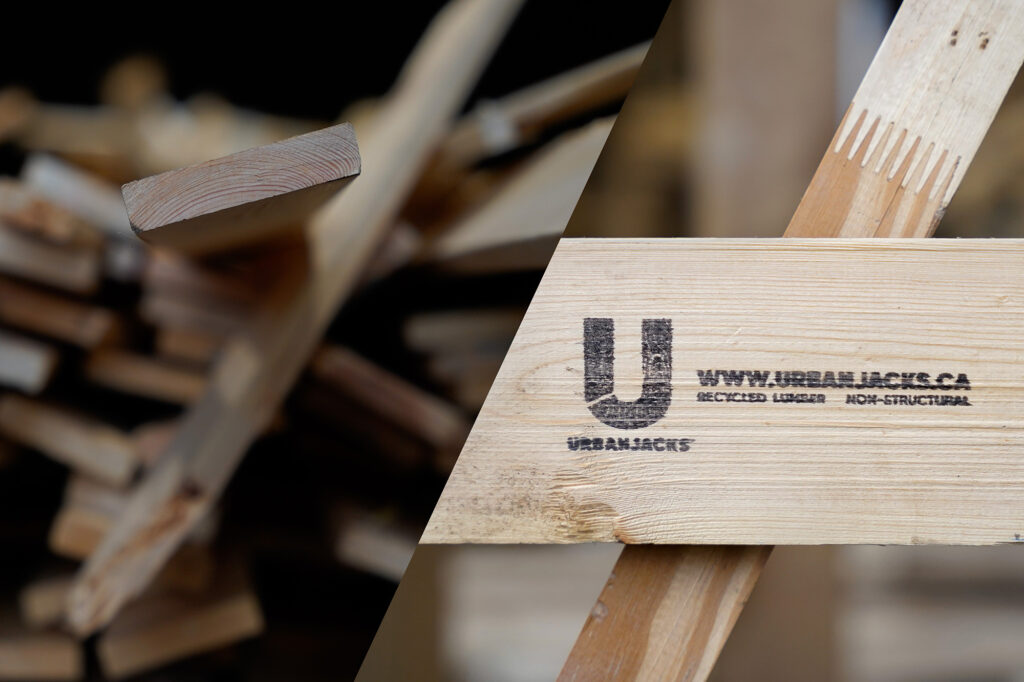
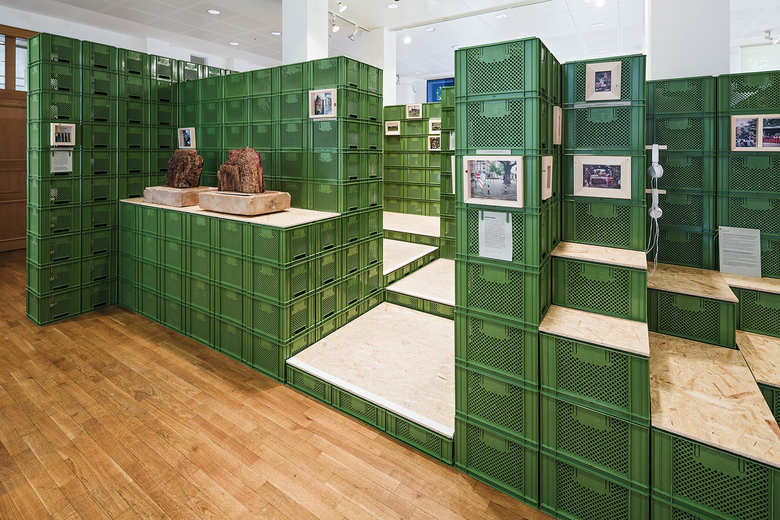
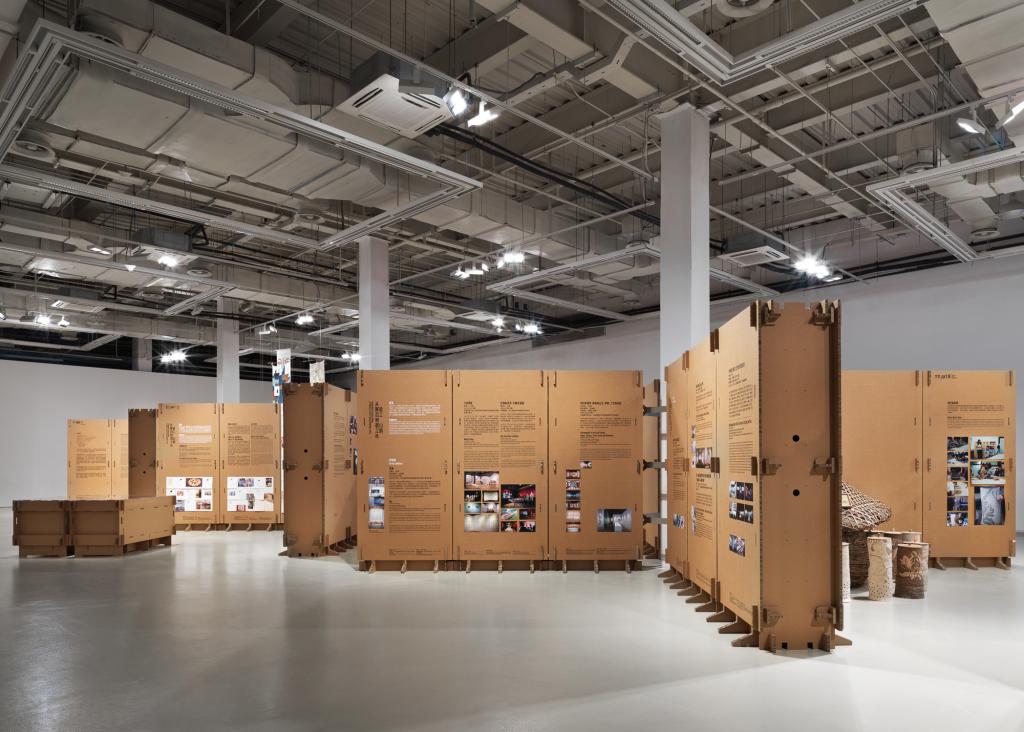
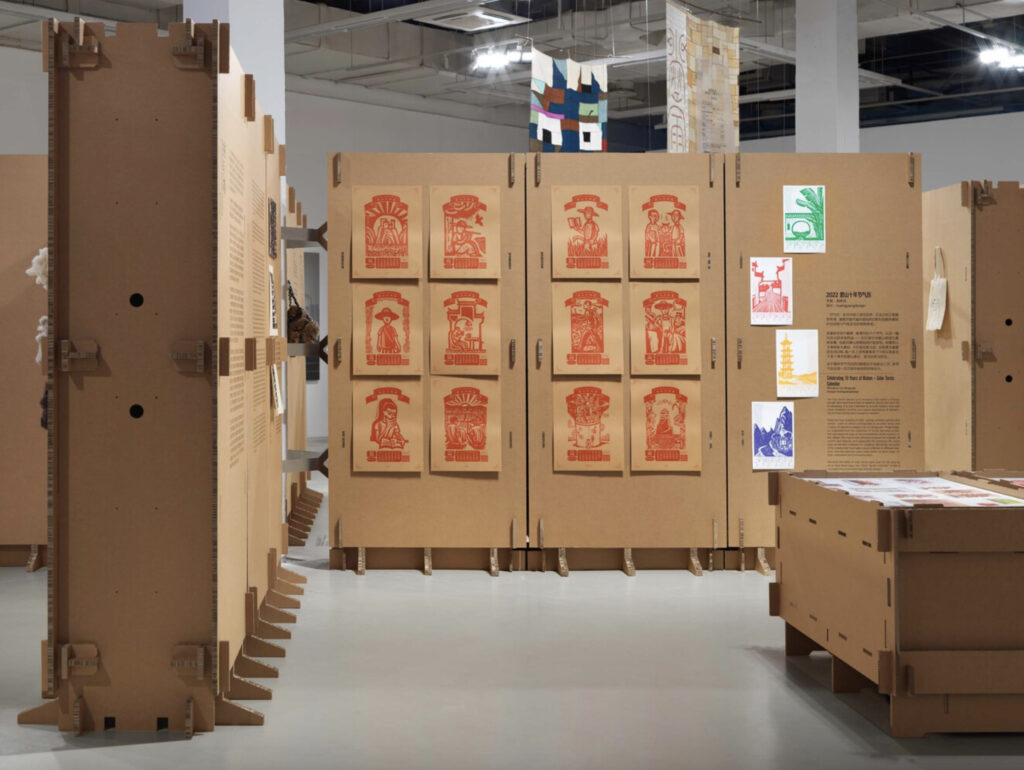
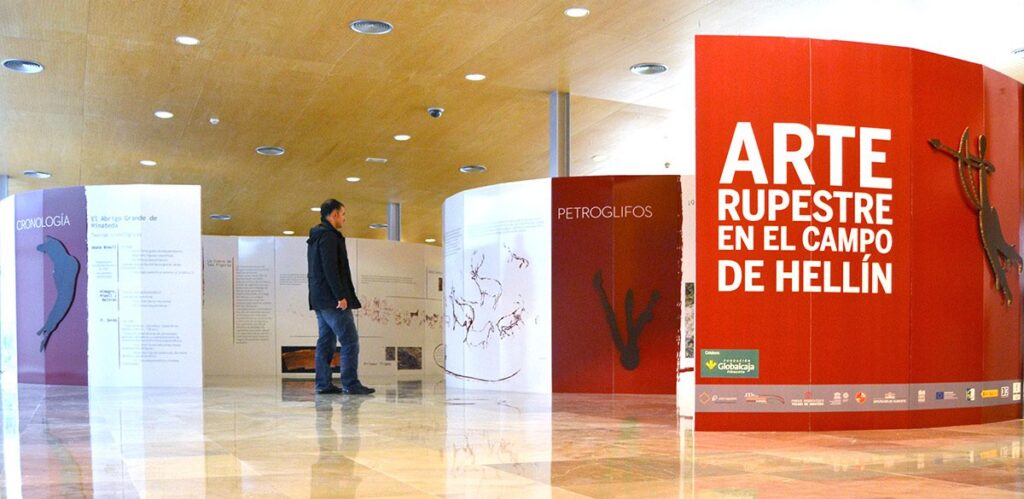
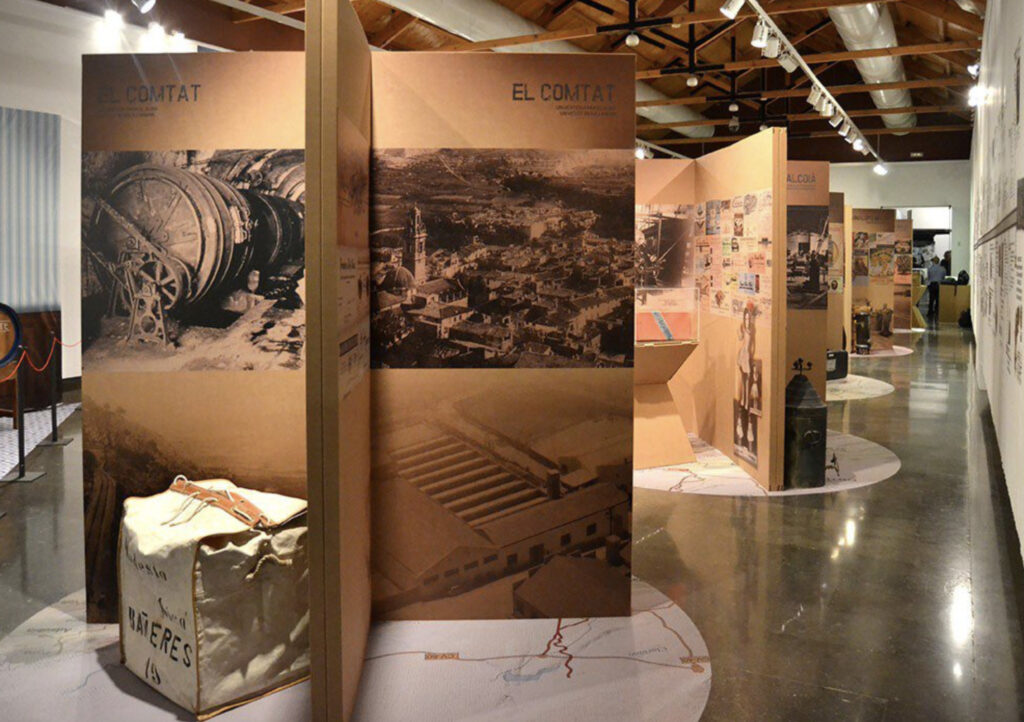
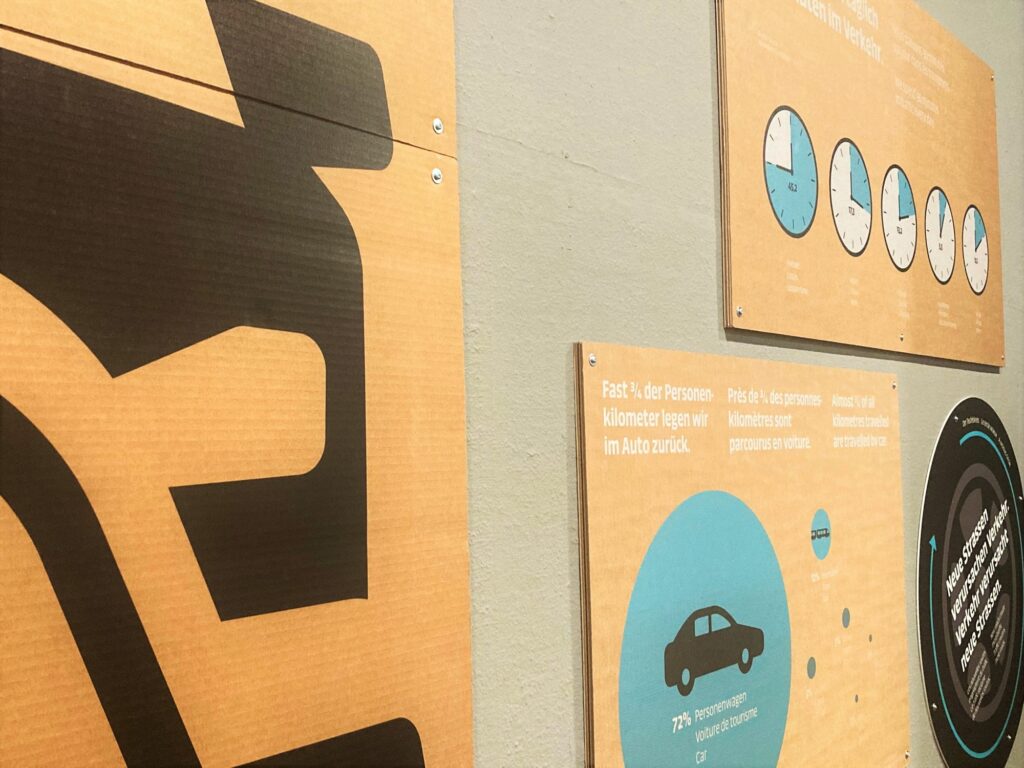
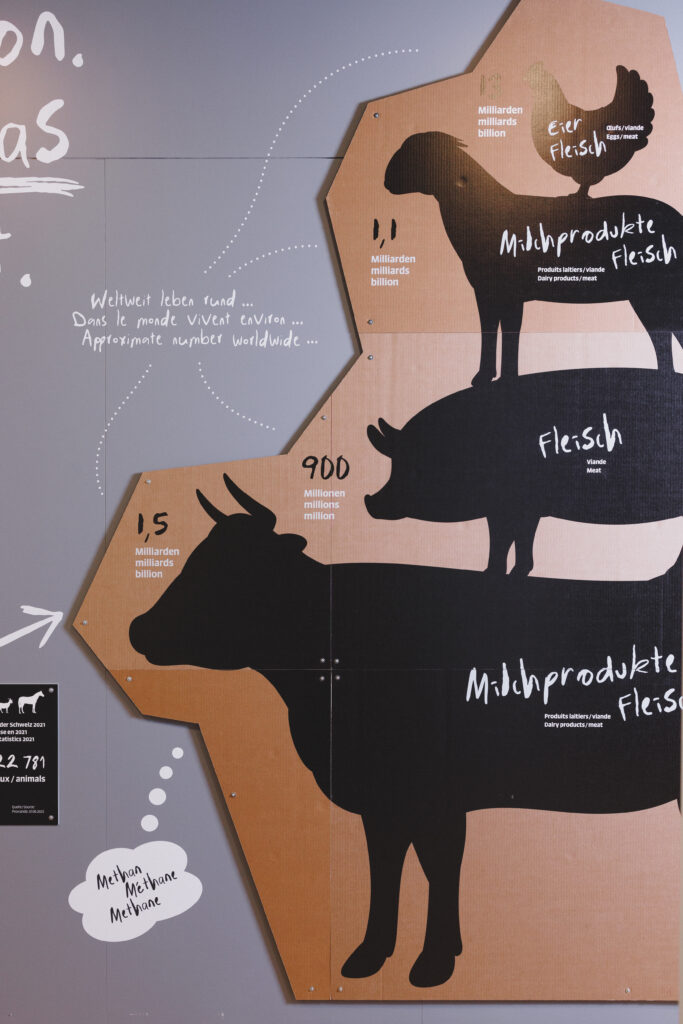
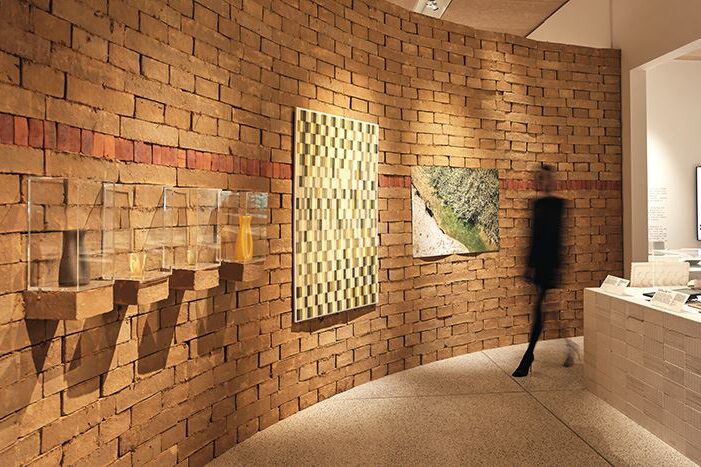
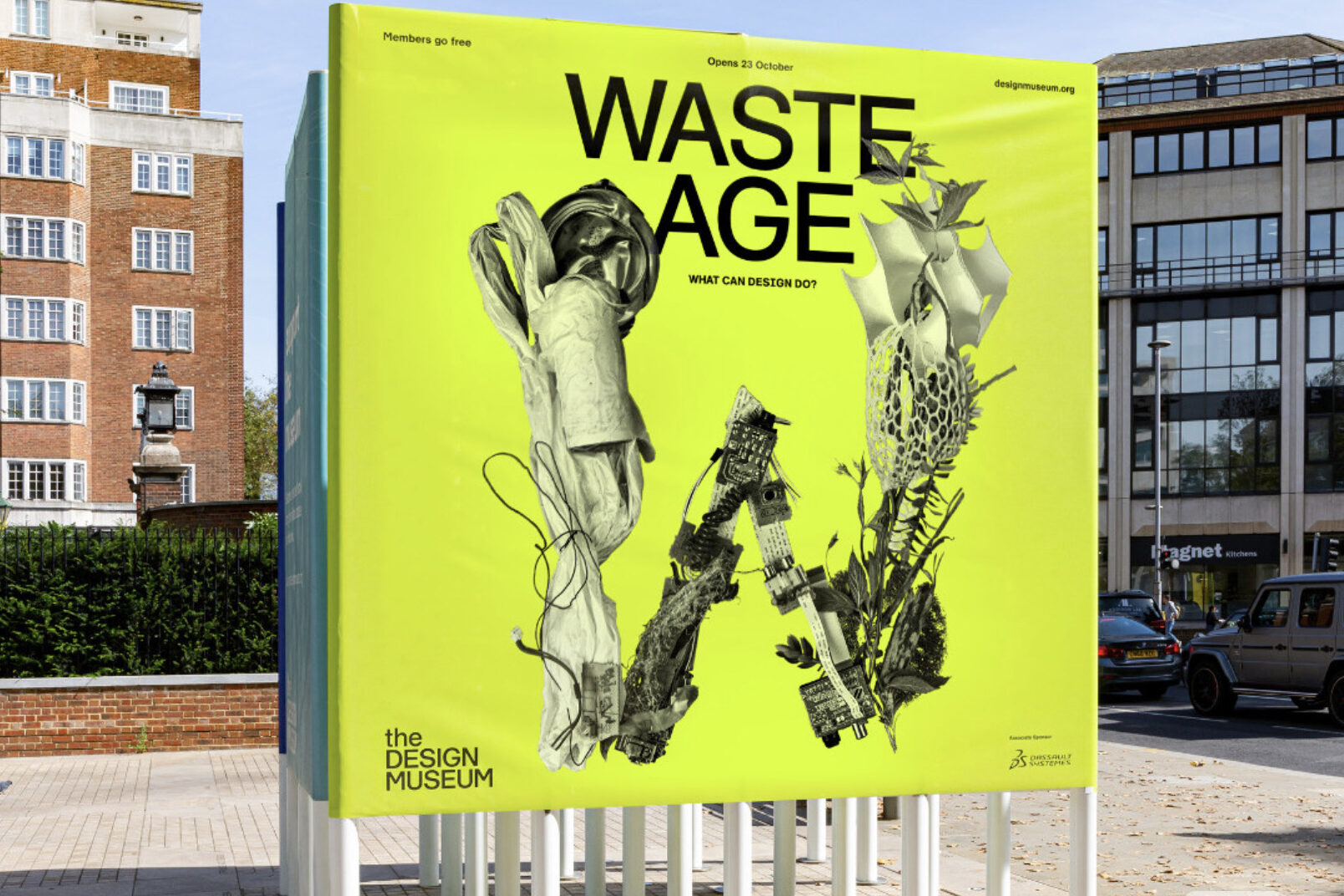
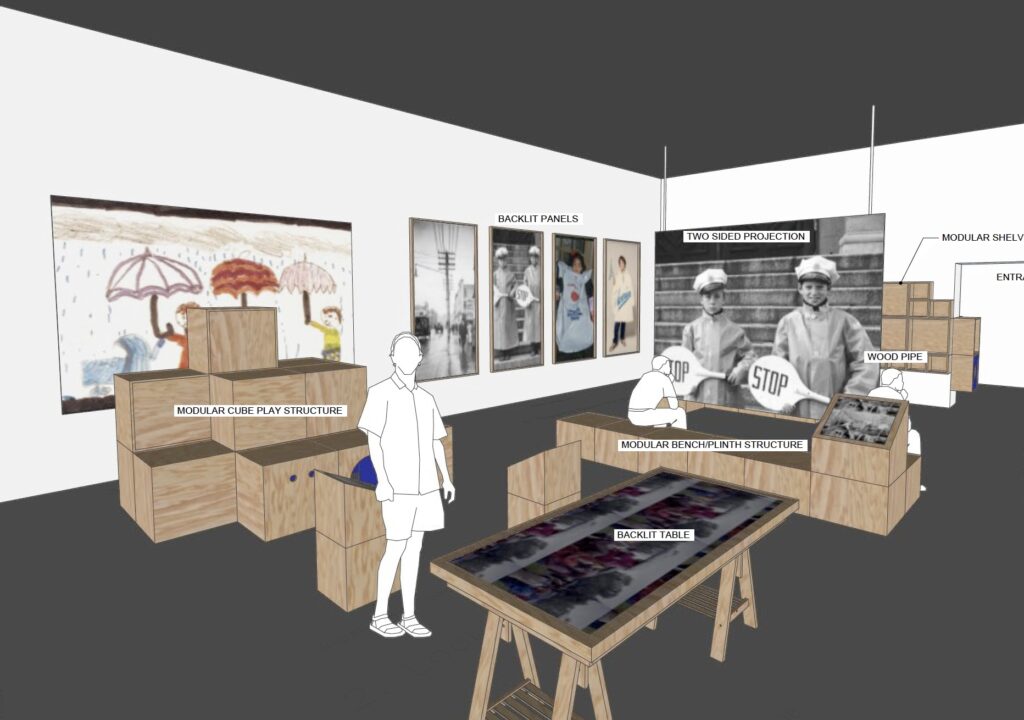

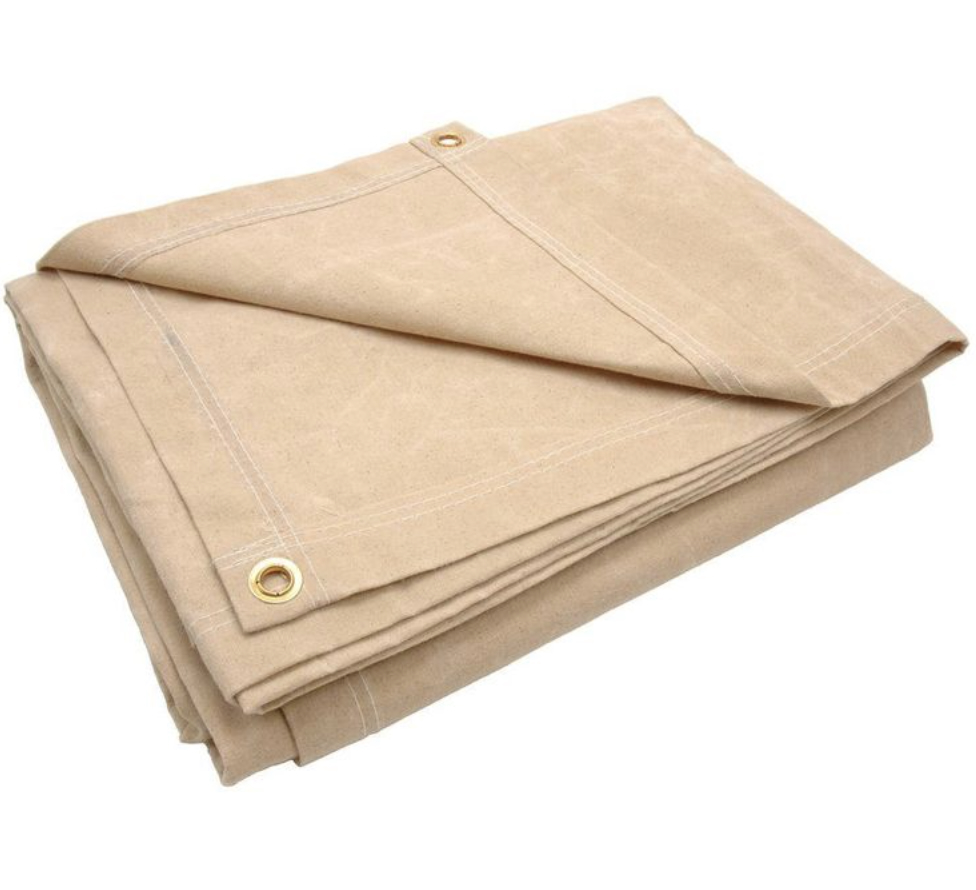
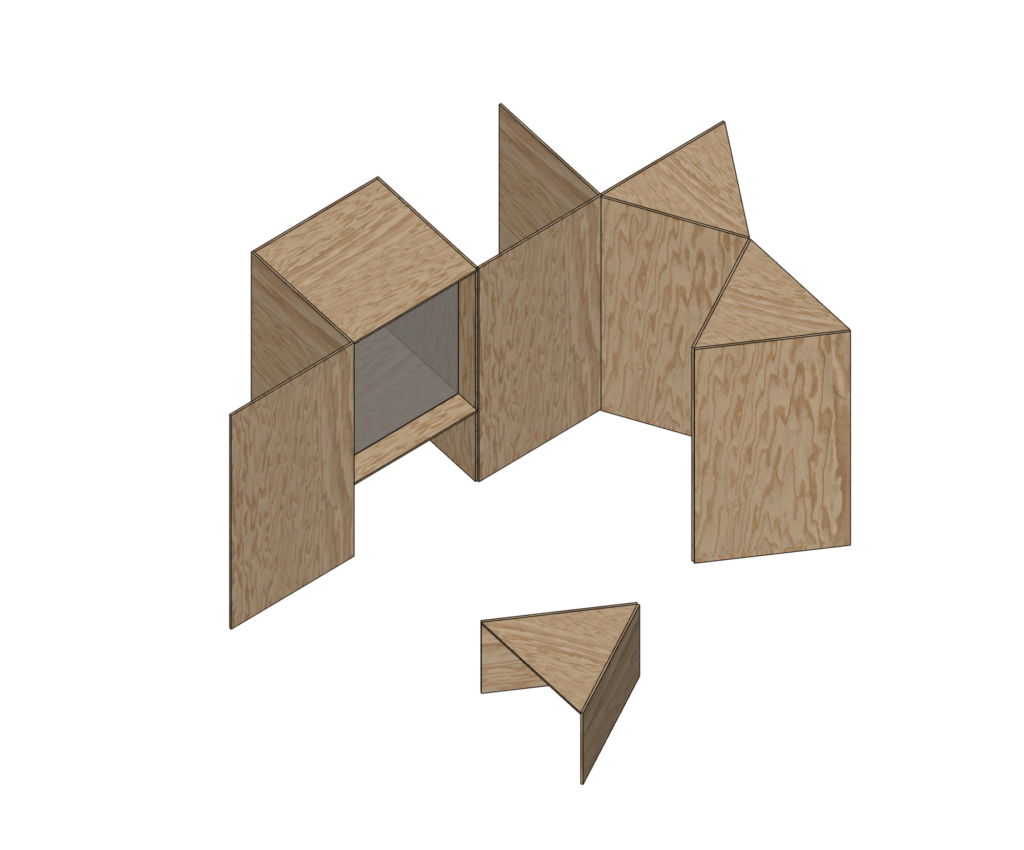
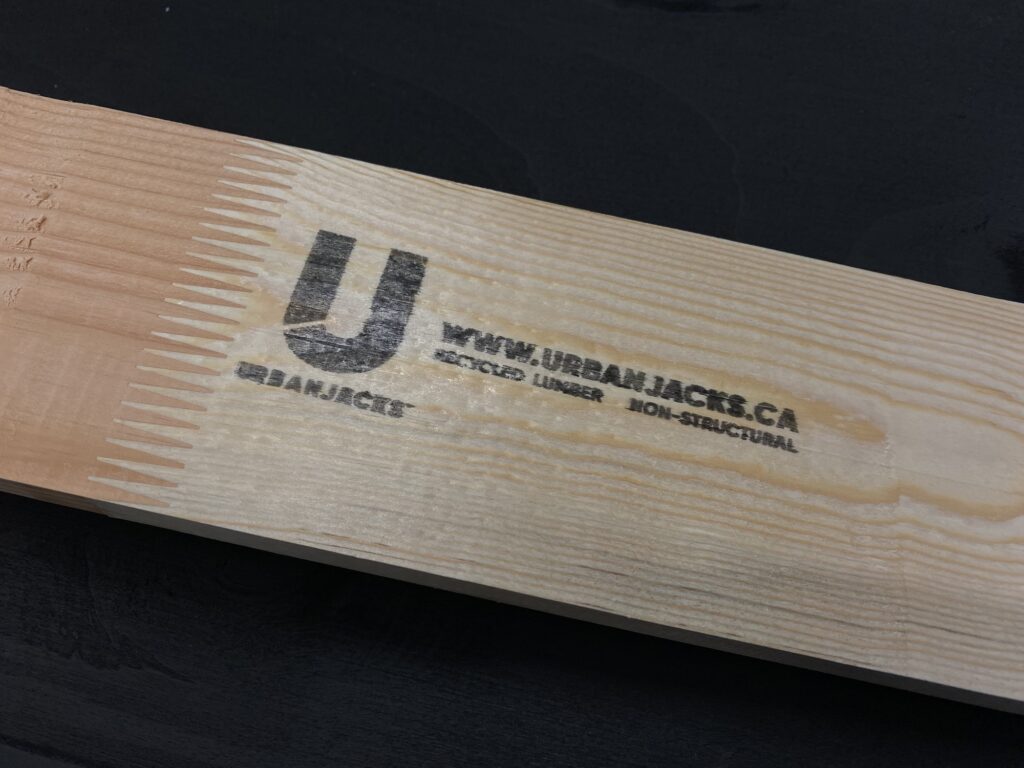
4. Building
Circular building of exhibitions and theatre sets requires techniques that minimize waste during the building process. Assembly techniques and joinery choices also impact the potential for disassembly for materials reuse later.

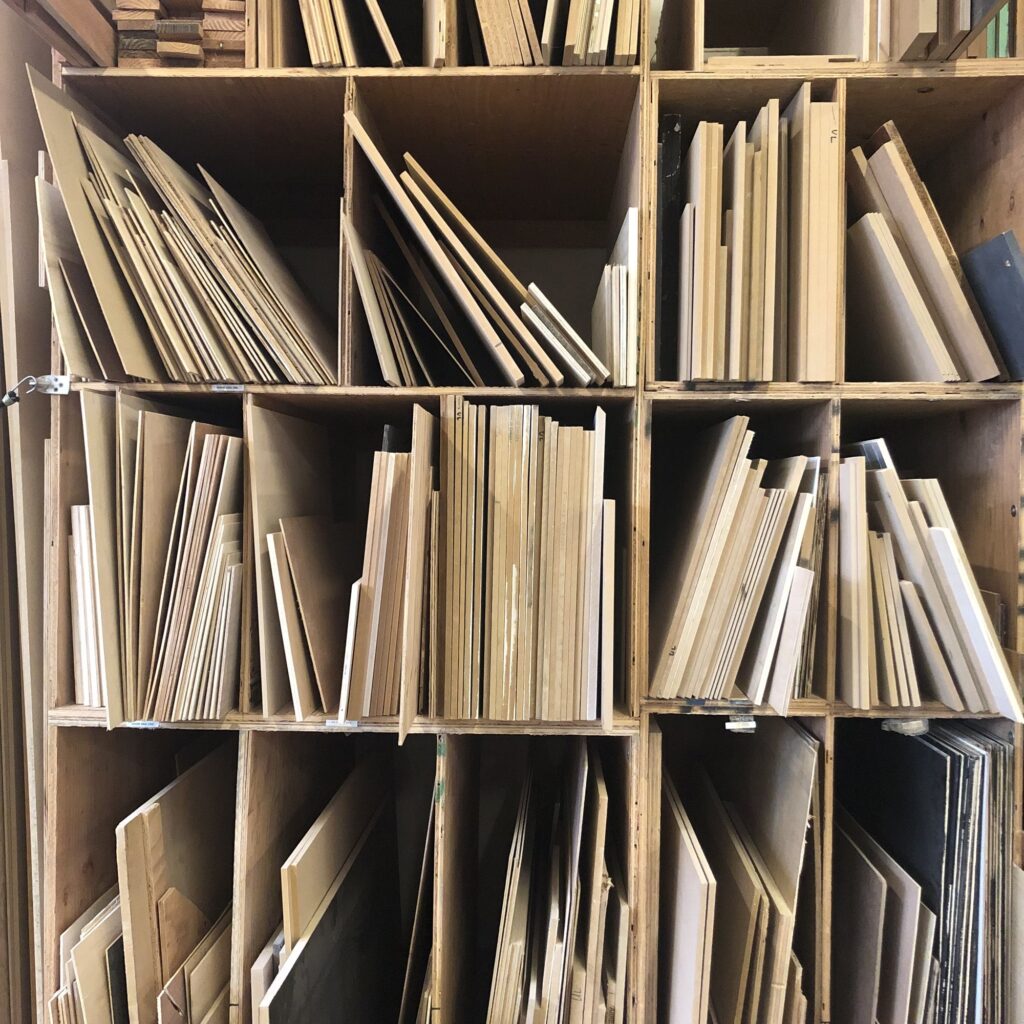
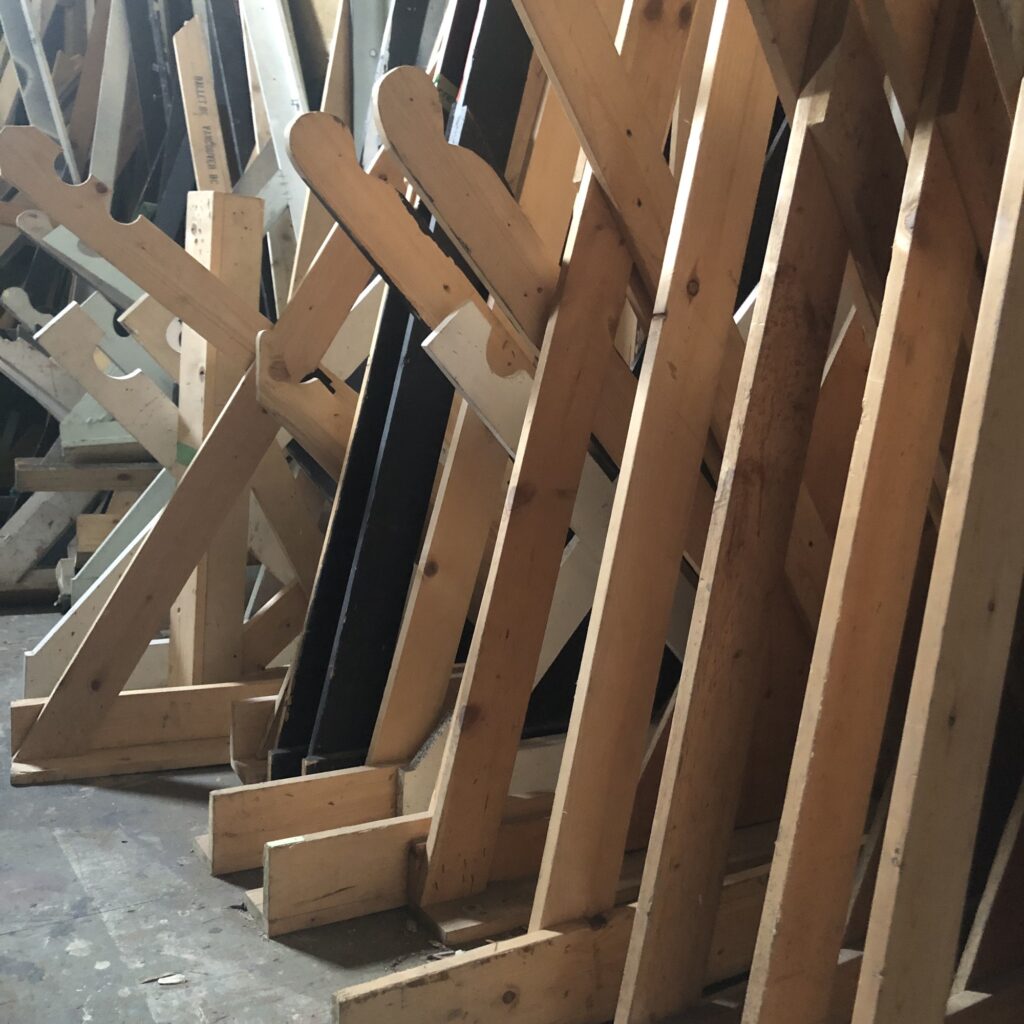
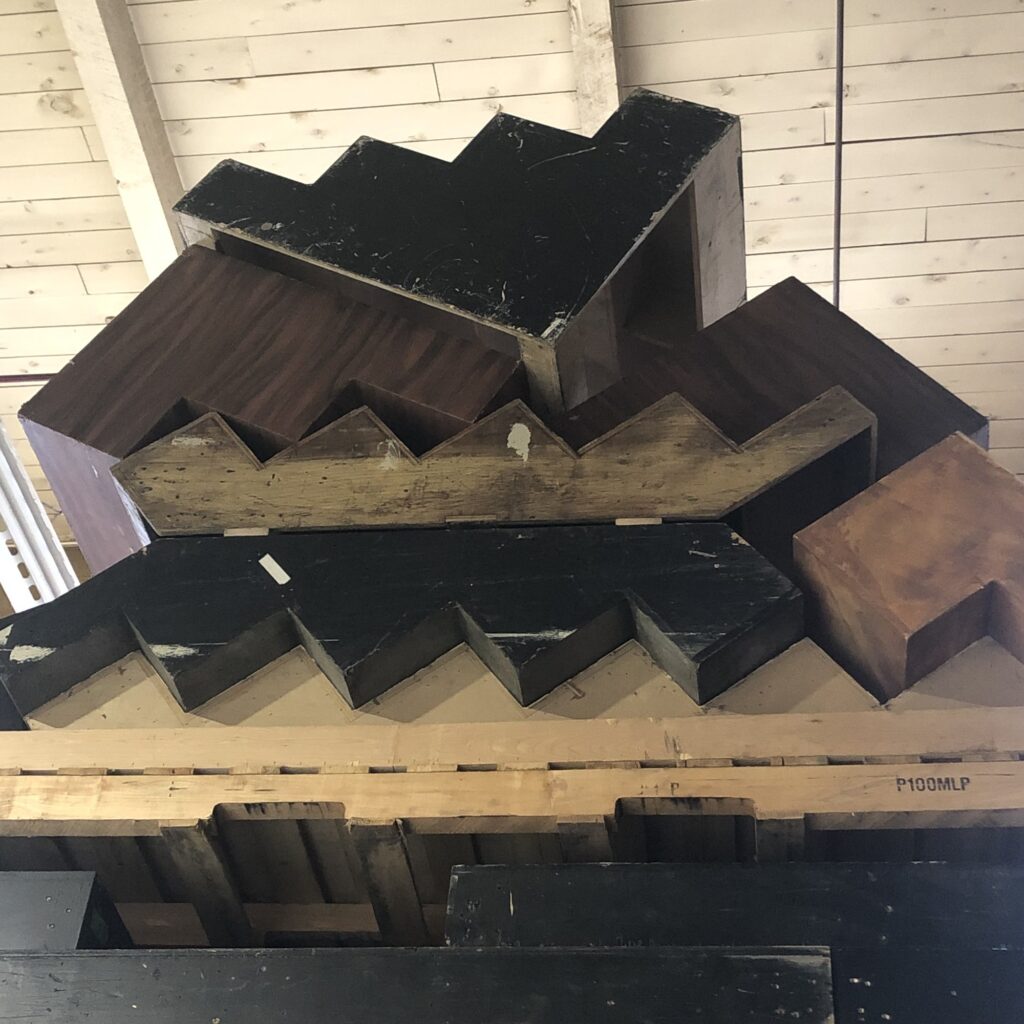
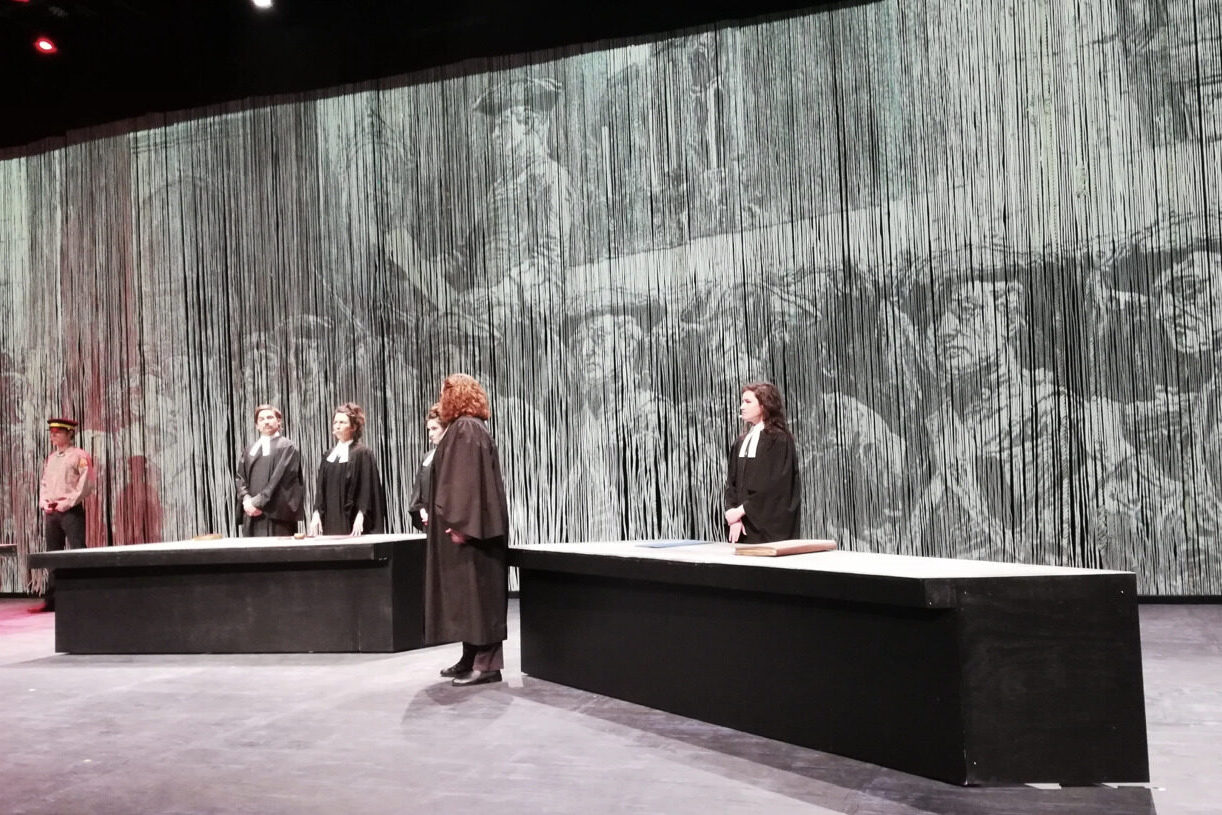
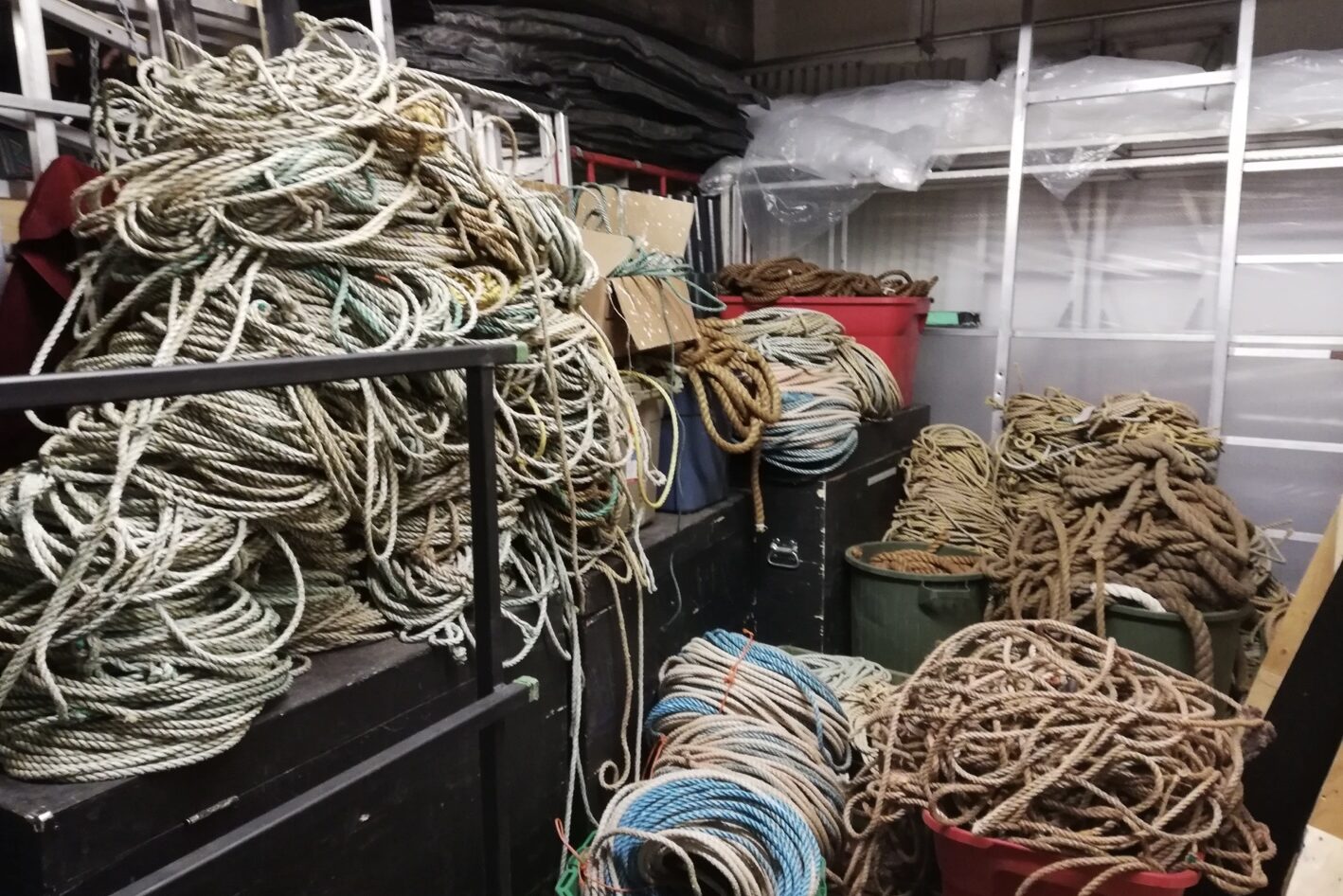
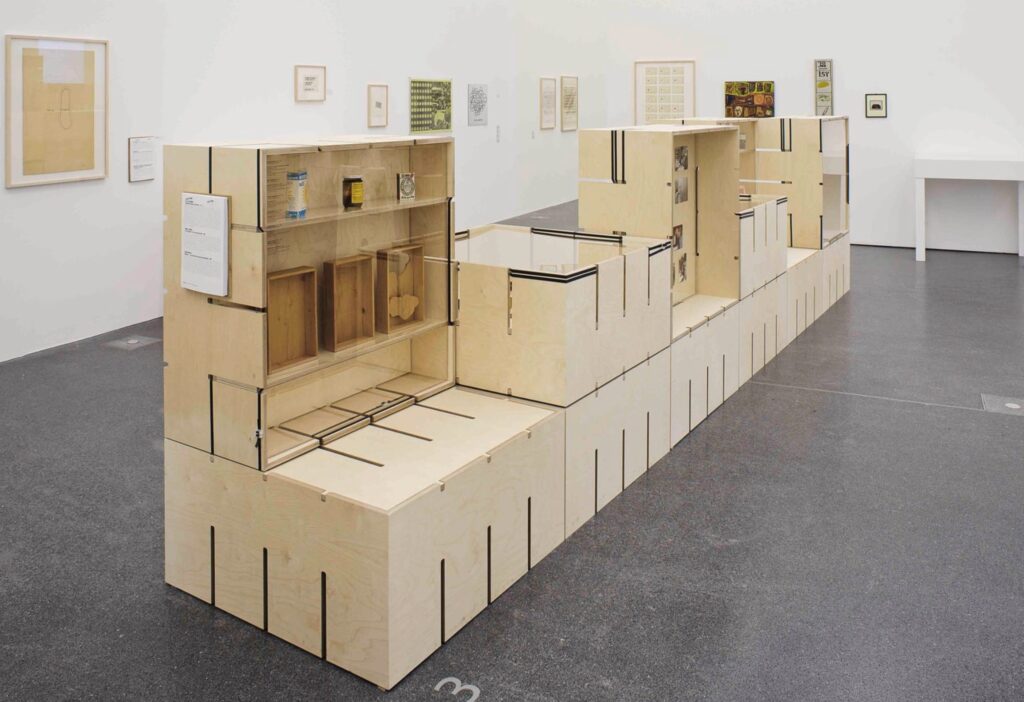
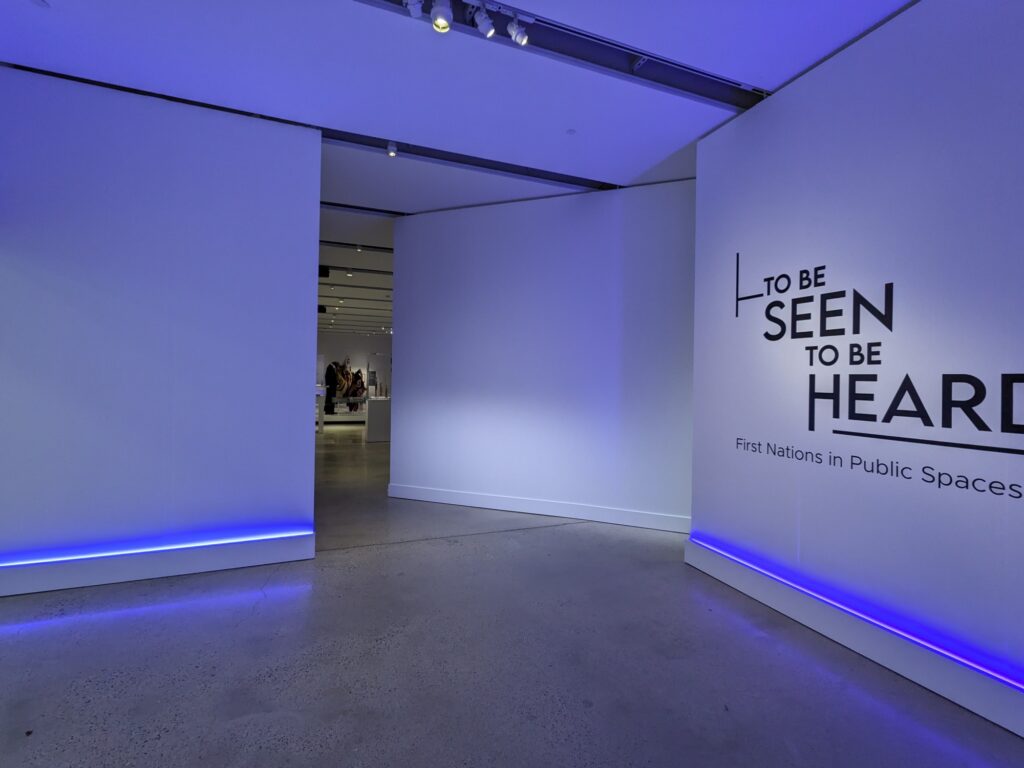
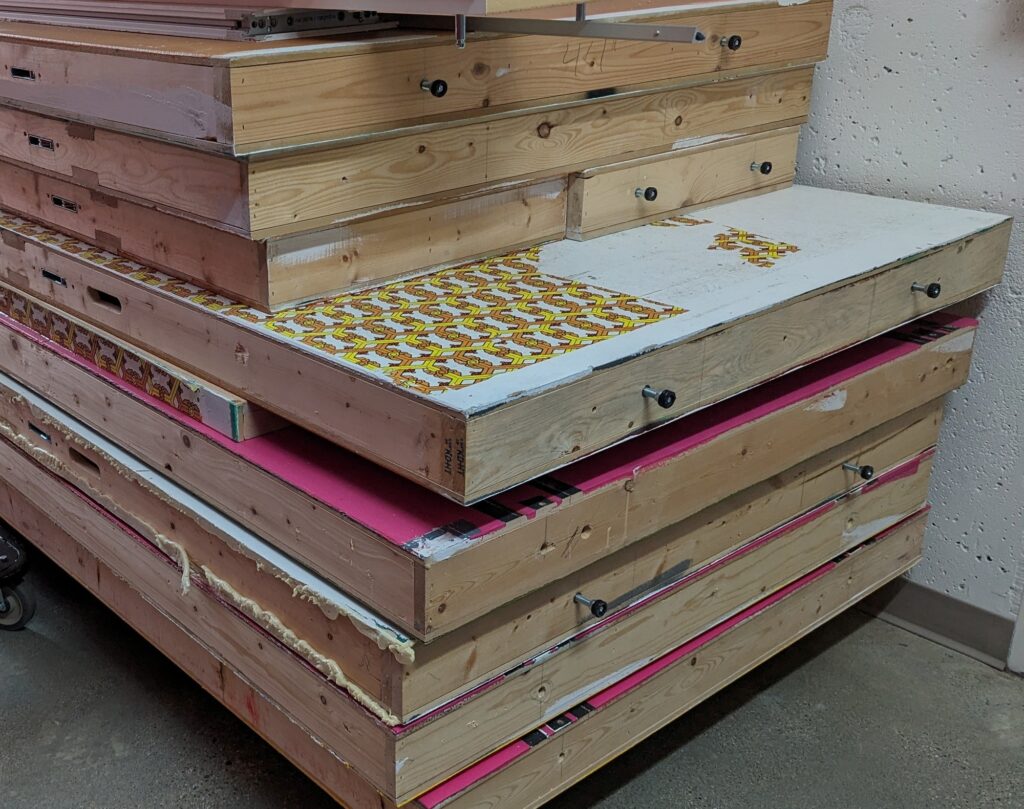
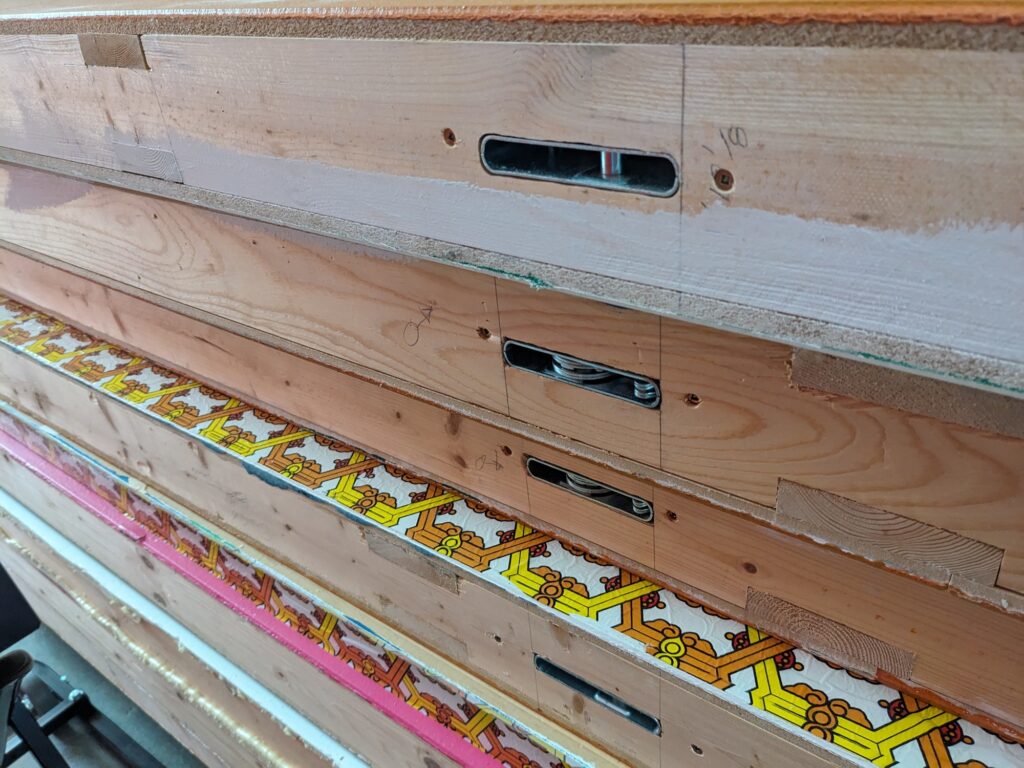
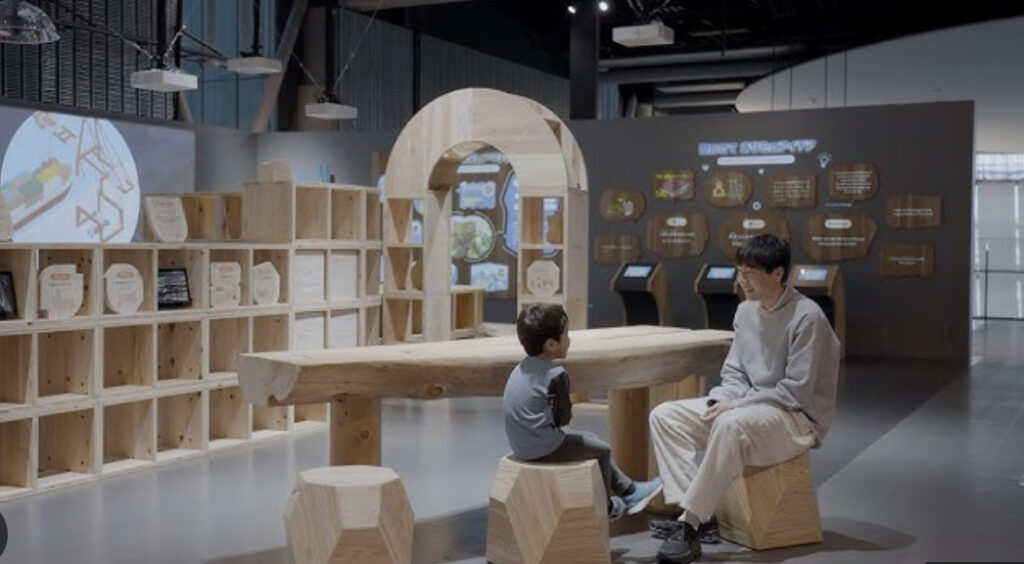

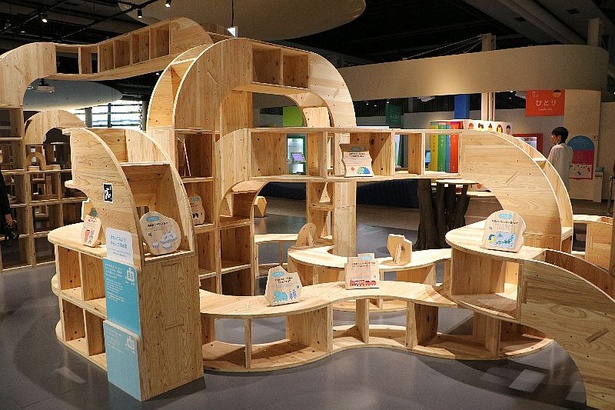
5. Unbuilding
Unbuild (or disassemble) exhibitions to minimize waste and preserve materials for reuse. Effective planning, design, and assembly techniques will facilitate this unbuilding process at the end of an exhibition.
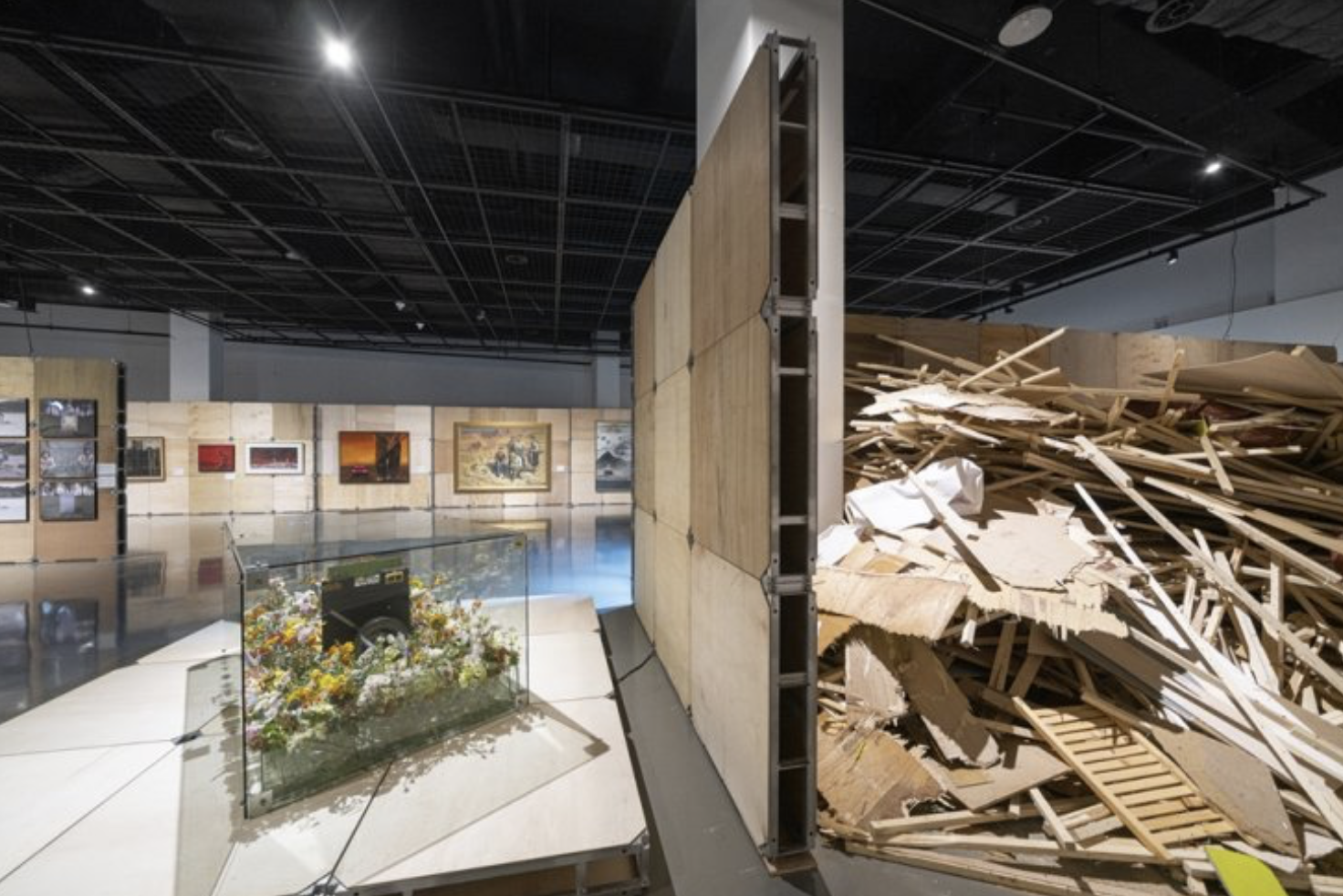
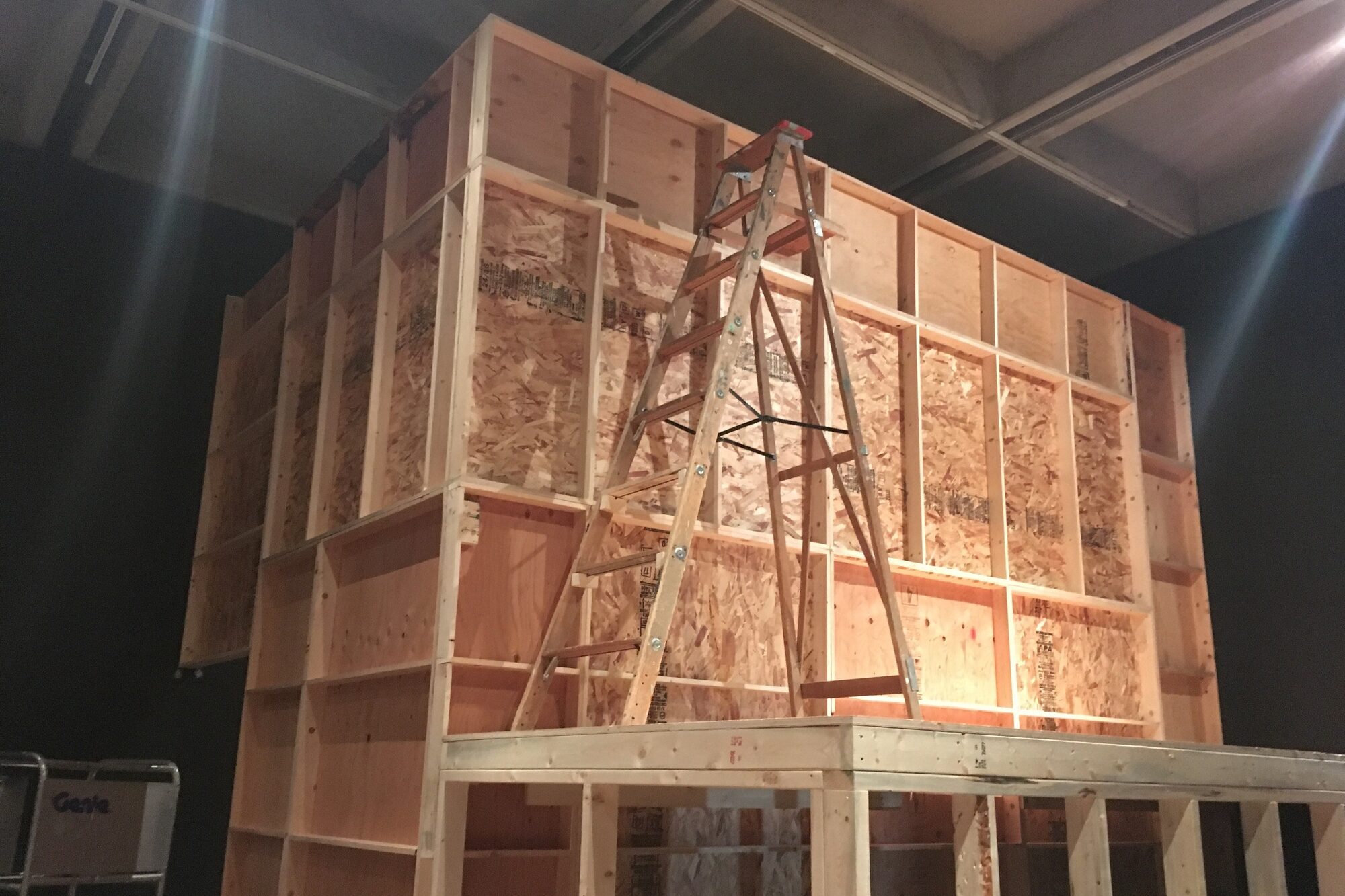
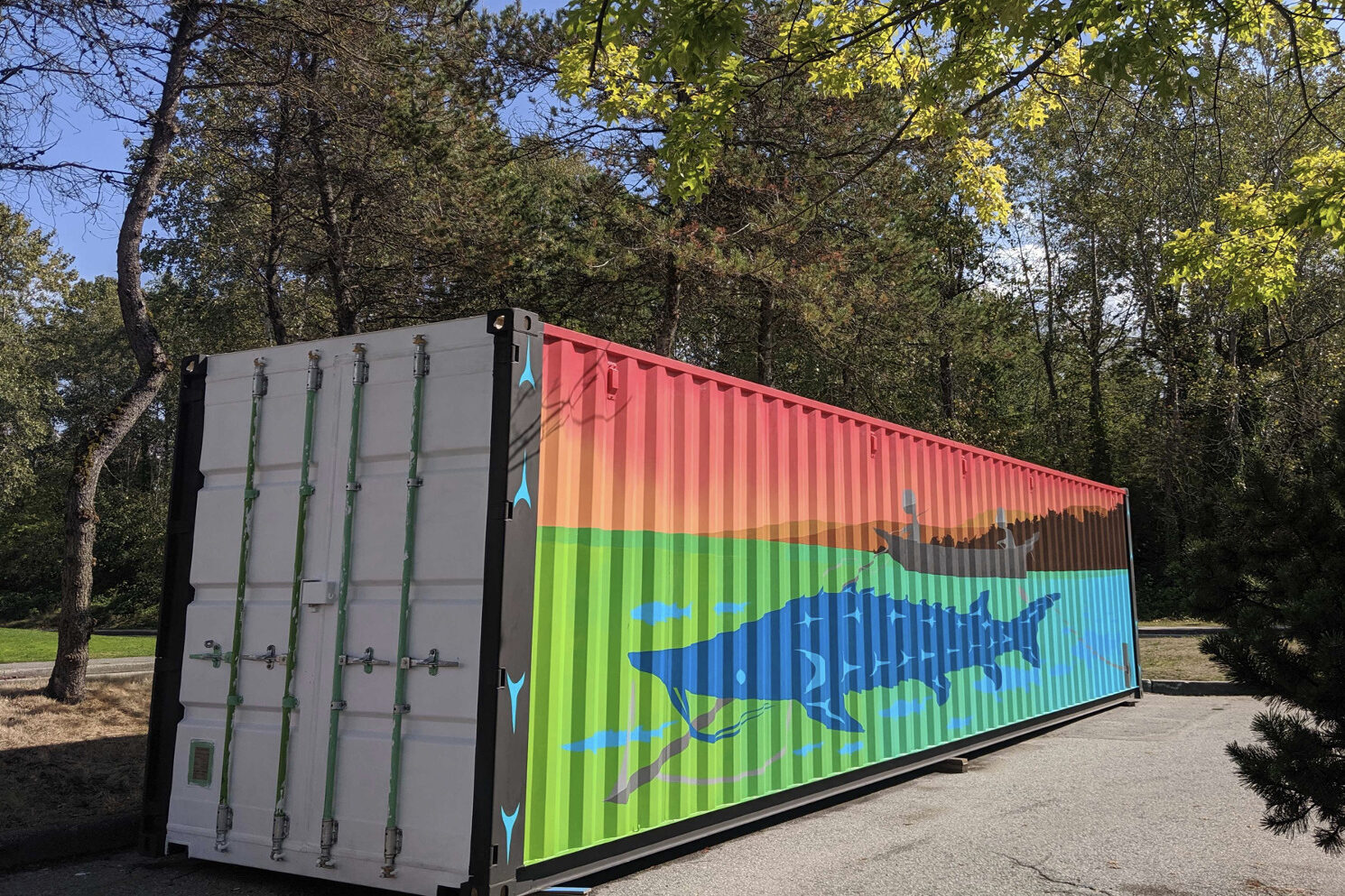
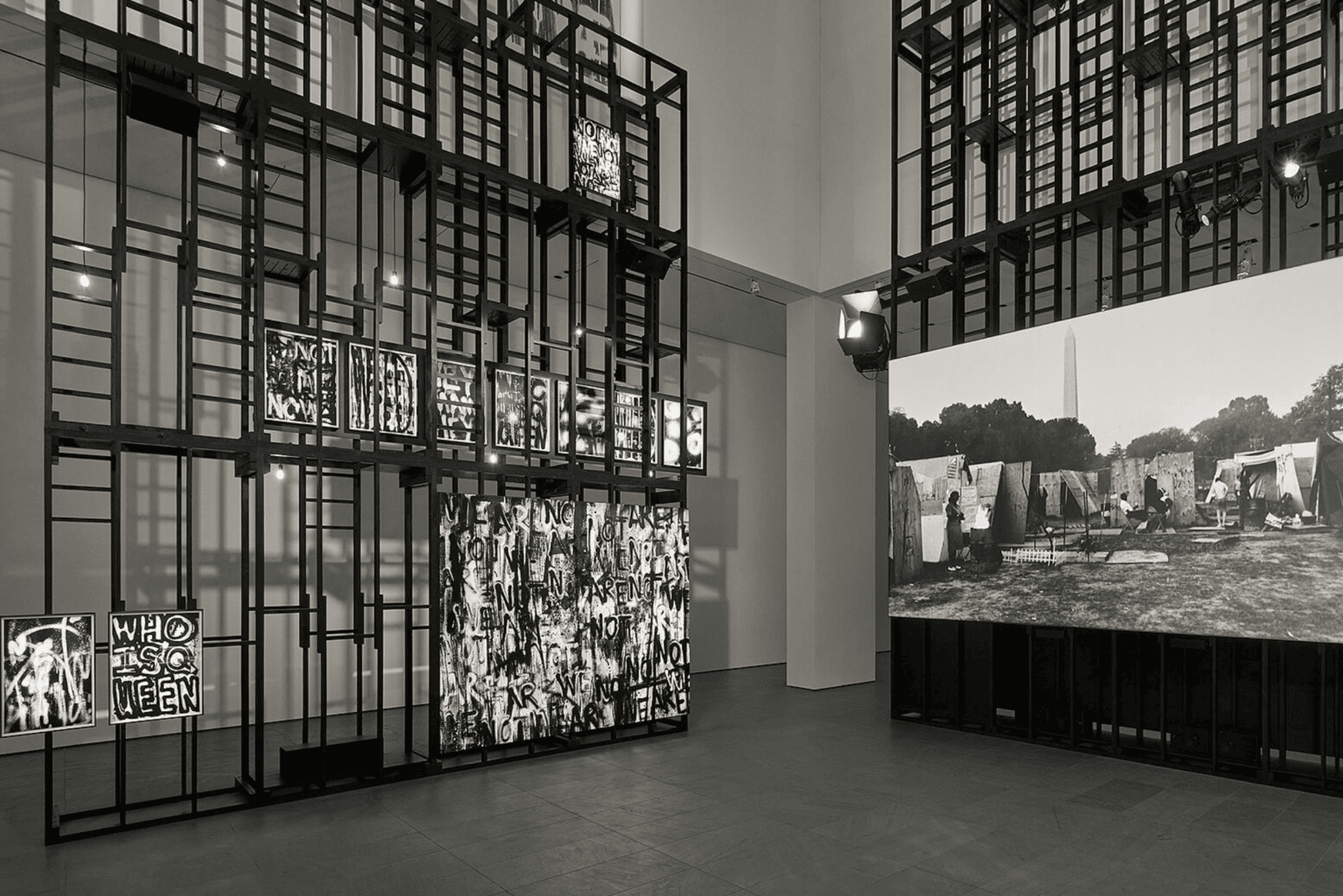
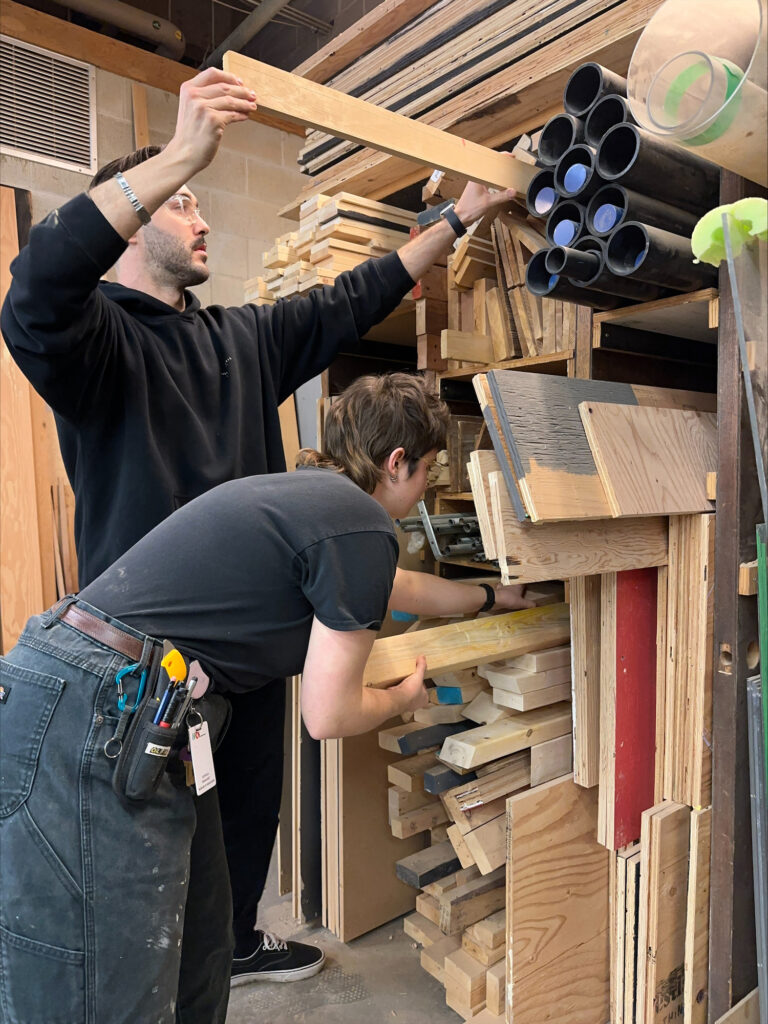
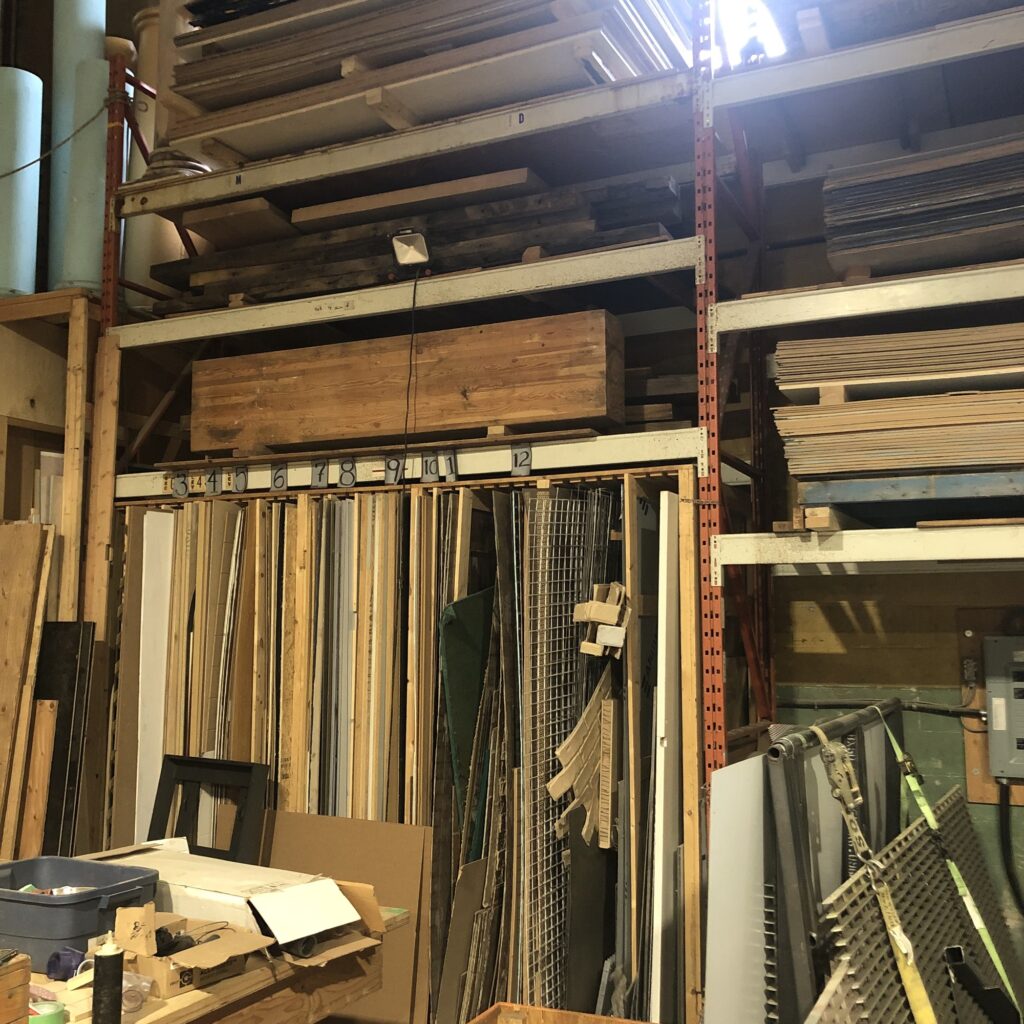
SAGE Pinterest Board
SAGE collaborators have collected a variety of examples and inspiration from across the web in this board. Explore and find inspiration for your next exhibition or staged event.